Solyndra
description: a solar panel manufacturer that filed for bankruptcy, controversial for receiving government loans
47 results

The Entrepreneurial State: Debunking Public vs. Private Sector Myths
by
Mariana Mazzucato
Published 1 Jan 2011
The programme was administered by the Department of Energy (DoE) under the executive director of the Loan Programs Office Jonathan Silver, who had joined the DoE in 2009 and was himself a former VC and hedge fund manager. Solyndra, a manufacturer of high-tech copper indium gallium (di)selenide (CIGS) solar panels, received $527 million from the programme and invested in a new, more automated factory that would boost output and economies of scale. Solyndra had hoped that its CIGS solar PV technology would provide a significant cost advantage following an explosion in the price of raw silicon around 2008, the primary ingredient in market-dominating crystalline silicon (C-Si) solar panels. Shifts in global solar markets prevented Solyndra from capitalizing on its investments. Before Solyndra could exploit the economies of scale provided by its increased manufacturing capacity, the cost of raw silicon collapsed.
…
The best-case scenario is obtaining massive financial returns reaped through capital gains created by the sale of stock as opposed to a return on investment created by cash flow from operations. But a successful ‘exit’ is not always possible in uncertain markets, as Solyndra proved. When Solyndra’s key investors abandoned their $1.1 billion investment, 1,000 jobs were lost, and a $535 million government-guaranteed loan was wasted. Rather than staying the course, in other words, Solyndra’s investors jumped ship.11 The irony is that government support often makes companies like Solyndra more attractive to investors, who seek the State’s ‘patient capital’ and respond to its signals. The conclusion that might follow is that the government should focus exclusively on commissioning the development of the riskiest technologies, or, as some argue (Kho 2011), that VC ‘isn’t for factories’ (even with a government loan guarantee).
…
The combination of public support and First Solar’s current position as a dominant thin-film producer and solar PV cost leader makes its success nearly assured, and it is hard to imagine how such a company could fail, provided that public investment continued. The impatience of VCs: How Solyndra got burned by its investors10 The example of Solyndra illustrates how the sudden exit of VC can also ruin the prospects of companies developing innovative technologies that had also been supported by taxpayers. Solyndra was a one-time darling among clean-tech companies and first to obtain a loan guarantee as part of the US ARRA’s $37 billion loan guarantee programme. The programme was administered by the Department of Energy (DoE) under the executive director of the Loan Programs Office Jonathan Silver, who had joined the DoE in 2009 and was himself a former VC and hedge fund manager.

The New Geography of Jobs
by
Enrico Moretti
Published 21 May 2012
But in 2011 the city experienced a serious setback when one of its largest employers, a solar panel company called Solyndra, filed for bankruptcy. Solyndra was supposed to be a poster child for enlightened industrial policy, but it has instead turned into a painful cautionary tale. In 2009 the U.S. Department of Energy provided the firm with a loan guarantee of about $535 million, which enabled Solyndra to open a major production facility in Fremont and hire more than one thousand workers to make solar panels. High-profile ribbon-cutting ceremonies followed, together with a visit by President Obama, who confidently presented Solyndra as “the face of a brighter and more prosperous future.”
…
High-profile ribbon-cutting ceremonies followed, together with a visit by President Obama, who confidently presented Solyndra as “the face of a brighter and more prosperous future.” Countless news articles touted the promising future of America’s “advanced manufacturing.” But Solyndra’s business model was based on a seriously flawed premise. It depended entirely on the competitiveness of a new type of solar array, which was supposed to generate power more cheaply than silicon-based solar cells. When silicon was expensive, Solyndra’s technology seemed inspired. But even then a smart analyst would have realized that the price of silicon was unlikely to remain high forever, because high prices inevitably create a strong incentive for other producers to enter the market, expand supply, and eventually drive down the price.
…
By 2009, when the federal government approved the loan guarantee, the price of silicon was falling precipitously. (Another setback was the decision of the Chinese government to flood the market with heavily subsidized silicon-based solar panels.) In the end, the drop in price caused Solyndra to go bankrupt. The media frenzy in the wake of Solyndra’s collapse focused mainly on whether political contributions were behind the loan guarantee and overlooked the two most important lessons. First, while one mistake does not condemn an entire program, the track record on industrial public subsidies in the United States and Europe is not great.
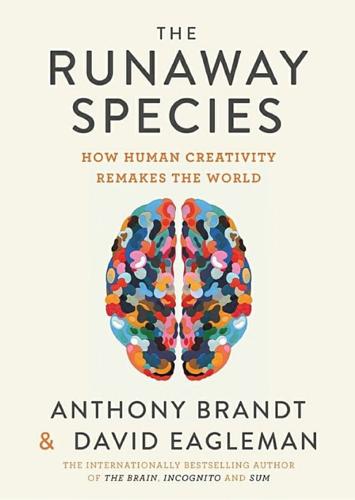
The Runaway Species: How Human Creativity Remakes the World
by
David Eagleman
and
Anthony Brandt
Published 30 Sep 2017
The government’s support fueled a surge in private investment, leading to sharp drops in the price of solar technology. Solyndra, moreover, generated several creative concepts. Unlike the flat panels we’ve become used to, Solyndra’s panels were cylindrical, assuring that some part was always facing the sun. The panels were also windproof, potentially opening up new markets in blustery climes. Solyndra failed not because it was a poor idea, but because the price of solar fell faster than had been predicted, and Solyndra couldn’t lower their own manufacturing costs quickly enough – market forces that were hard to foresee.
…
Innovation requires a number of dead ends, and sometimes those dead ends are costly. One example is the solar panel company Solyndra. In 2011, they went bankrupt and defaulted on $536 million in federal guarantees. More than 1,000 employees lost their jobs. Amid accusations of fraud, the FBI raided the company’s headquarters. It was a major setback for the Obama administration, which had touted the company as an innovator and job-creator. To the administration’s opponents, it was an example of government incompetence and wasted taxpayer dollars. Viewed in isolation, the Solyndra fiasco was an embarrassment for the administration; but while holding the government accountable is important, assailing it for one failure is counter-productive.
…
“Conditions of Chinese Artist Ai Weiwei’s Detention Emerge.” New York Times. August 12, 2011. Accessed August 21, 2015. <http://www.nytimes.com/2011/08/13/world/asia/13artist.html?_r=2&smid=tw-nytimes&seid=auto> Brady, Jeff. “After Solyndra Loss, U.S. Energy Loan Program Turning a Profit.” NPR. Accessed August 20, 2015. <http://www.npr.org/2014/11/13/363572151/after-solyndra-loss-u-s-energy-loan-program-turning-a-profit> Brand, Stewart. How Buildings Learn: What Happens After They’re Built. New York: Penguin, 1994. Brandt, Anthony. “Why Minds Need Art.” TEDx Houston. November 3, 2012. Accessed May 17, 2016.
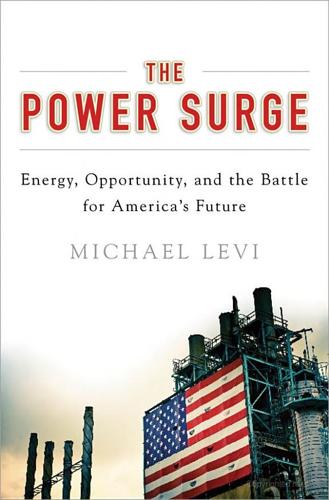
The Power Surge: Energy, Opportunity, and the Battle for America's Future
by
Michael Levi
Published 28 Apr 2013
Ibid. 17. David Louie, “Solyndra Files for Bankruptcy, Lays Off 1,100 Workers,” ABC 7 San Francisco, August 31, 2011, http://abclocal.go.com/kgo/ story?section=news/business&id=8336915. 18. American Bankruptcy Insitute, “Annual Business and Non-business Filings by Year (1980‒2011),” 2012, http://www.abiworld.org/AM/ AMTemplate.cfm?Section=Home&TEMPLATE=/CM/ContentDisplay. cfm&CONTENTID=65139. 19. Chris Gentilviso, “President Obama Visits Green Energy Start-Up Solyndra,” Time.com, May 26, 2010, http://newsfeed.time.com/2010/05/26/ president-obama-visits-green-energy-start-up-solyndra/. 20. Seema Mehta, “Romney Accuses Obama of ‘Crony Capitalism’ in Solyndra Trip,” Los Angeles Times, May 31, 2012. 21.
…
A spokesman for John McCain, the Republican candidate, also greeted the speech warmly, explaining how the senator’s plans lined up with Gore’s goals.15 Indeed, when McCain unveiled his energy policy two months earlier, he chose a wind energy‒training facility in Portland, Oregon, as the venue.16 The new consensus seemed clear: after decades of playing second fiddle to oil and gas, it was time for renewable energy to thrive. But bright prospects for renewable energy were not the first thing on people’s minds on August 31, 2011. That day Solyndra, a previously obscure solar company headquartered in Fremont, California, announced that it was filing for bankruptcy and laying off eleven hundred employees.17 This would not normally have been an unusual event in a year that saw 131 companies file for bankruptcy every day, but Solyndra was not a normal company.18 The firm, founded in 2005 and backed by a roster of previously successful venture capitalists, had bet that its product would thrive in a booming market for solar power.
…
In May 2010, President Obama himself visited the company, further establishing it as a model not just for American energy but also for the economy at large.19 The bankruptcy announcement quickly turned an example of everything good about renewable energy into a symbol of all its flaws. Alternative energy, critics declared, was not ready for prime time; had there been a real market for its products, Solyndra would not have failed. Worse was what the episode apparently revealed about the relationship between renewable energy and government. Solyndra, they said, existed only because government bureaucrats had handed it hundreds of millions of taxpayer dollars. At best, its executives squandered that money, in the process destroying more than a thousand jobs. At worst, some pundits and political operatives darkly suggested, the pile of cash was an invitation to crony capitalism, with money simply steered to the president’s political friends.20 Here, in one small company, was everything that many people found wrong with alternative energy.
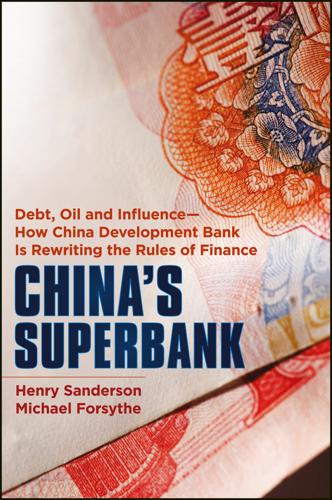
China's Superbank
by
Henry Sanderson
and
Michael Forsythe
Published 26 Sep 2012
One analyst even said the company could be valued at $2 billion after the stock offering. But by the summer of 2010, as CDB was going into overdrive, Solyndra withdrew its IPO registration. In November, it announced it would shut down a plant and lay off workers just seven weeks after opening Fab 2. CEO Brian Harrison said that solar module prices had plummeted as low-cost Chinese manufacturers ramped up production.11 By September of the following year, Solyndra had filed for bankruptcy. Energy Secretary Chu said that federal aid to Solyndra had been necessary to compete in a “fierce global race to capture” a market that will grow by “hundreds of billions of dollars” in coming decades.12 Compare the support Yingli and other Chinese solar makers have received from CDB—the banker to the state—with that Solyndra received, whose $535 million in loan guarantees from the Obama administration became a staple of Republican Mitt Romney’s 2012 presidential campaign.
…
Energy Secretary Chu said that federal aid to Solyndra had been necessary to compete in a “fierce global race to capture” a market that will grow by “hundreds of billions of dollars” in coming decades.12 Compare the support Yingli and other Chinese solar makers have received from CDB—the banker to the state—with that Solyndra received, whose $535 million in loan guarantees from the Obama administration became a staple of Republican Mitt Romney’s 2012 presidential campaign. LDK’s credit line from CDB is 16 times the loan guarantee Solyndra got. In total, five US companies were awarded $1.56 billion in guarantees through a US Energy Department program championed by Obama, a fraction of CDB’s total credit lines. Still, under pressure and the threat of trade sanctions, China’s solar CEOs hit back.
…
At a gathering at Beijing’s Grand Hyatt hotel in November 2011, where Chinese reporters broke into applause each time one of the executives criticized the threat of sanctions and defended the domestic industry, Trina Solar Ltd. CEO Gao Jifan said that China’s solar panel makers borrow at higher rates than what the US government charged Solyndra.13 CDB charges 6 to 7 percent, Gao had said earlier that month.14 Solyndra paid an average rate of 5 percent on $70 million in 2011 before filing for bankruptcy protection. In the Hyatt meeting, where Yingli’s Miao stood in his blue overalls, the solar CEOs said that the government gives them no special breaks and that most of the credit from CDB had not been used.
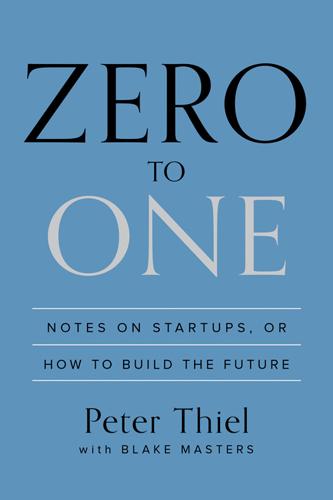
Zero to One: Notes on Startups, or How to Build the Future
by
Peter Thiel
and
Blake Masters
Published 15 Sep 2014
Al Gore implored us to attack these problems “with the urgency and resolve that has previously been seen only when nations mobilized for war.” People got busy: entrepreneurs started thousands of cleantech companies, and investors poured more than $50 billion into them. So began the quest to cleanse the world. It didn’t work. Instead of a healthier planet, we got a massive cleantech bubble. Solyndra is the most famous green ghost, but most cleantech companies met similarly disastrous ends—more than 40 solar manufacturers went out of business or filed for bankruptcy in 2012 alone. The leading index of alternative energy companies shows the bubble’s dramatic deflation: Why did cleantech fail?
…
THE ENGINEERING QUESTION A great technology company should have proprietary technology an order of magnitude better than its nearest substitute. But cleantech companies rarely produced 2x, let alone 10x, improvements. Sometimes their offerings were actually worse than the products they sought to replace. Solyndra developed novel, cylindrical solar cells, but to a first approximation, cylindrical cells are only 1/π as efficient as flat ones—they simply don’t receive as much direct sunlight. The company tried to correct for this deficiency by using mirrors to reflect more sunlight to hit the bottoms of the panels, but it’s hard to recover from a radically inferior starting point.
…
Maybe we still would have avoided these bad investments if we had taken the time to evaluate each company’s technology in detail. But the team insight—never invest in a tech CEO that wears a suit—got us to the truth a lot faster. The best sales is hidden. There’s nothing wrong with a CEO who can sell, but if he actually looks like a salesman, he’s probably bad at sales and worse at tech. Solyndra CEO Brian Harrison; Tesla Motors CEO Elon Musk THE DISTRIBUTION QUESTION Cleantech companies effectively courted government and investors, but they often forgot about customers. They learned the hard way that the world is not a laboratory: selling and delivering a product is at least as important as the product itself.
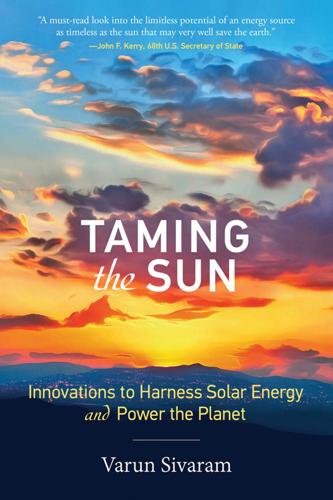
Taming the Sun: Innovations to Harness Solar Energy and Power the Planet
by
Varun Sivaram
Published 2 Mar 2018
Makers of Solar Cells’ Raw Material,” Washington Post, July 23, 2013, https://www.washingtonpost.com/business/economy/chinese-tariffs-may-hurt-us-makers-of-solar-cells-raw-material/2013/07/23/01ac60a4-f3d9-11e2-aa2e-4088616498b4_story.html. 34. Tim Worstall, “Solyndra: Yes, It Was Possible to See This Failure Coming,” Forbes, September 17, 2011, http://www.forbes.com/sites/timworstall/2011/09/17/solyndra-yes-it-was-possible-to-see-this-failure-coming. 35. Ashley Parker, “Romney Campaigns at Failed Solyndra Factory,” The New York Times, May 21, 2012, http://thecaucus.blogs.nytimes.com/2012/05/31/romney-to-campaign-at-failed-solyndra-factory. 36. Benjamin Gaddy, Varun Sivaram, and Francis O’Sullivan, “Venture Capital and Cleantech: The Wrong Model for Clean Energy Innovation,” July 2016, https://energy.mit.edu/wp-content/uploads/2016/07/MITEI-WP-2016-06.pdf. 37.
…
A glut of production capacity in China plunged the price of polysilicon, the raw material input for silicon solar cells, from over $400 per kilogram (kg) in 2008 to $50/kg in 2010.33 As a result, it was no longer necessary to economize on material costs with thin-film or thinner-silicon technologies. Stuck with a product that cost $6.29 per watt to manufacture but only earned $3.42 per watt in the marketplace, Solyndra filed for bankruptcy in 2011, leaving taxpayers on the hook to cover a half-billion dollars of debt.34 In 2012, Republican presidential nominee Mitt Romney assailed President Obama’s bet on Solyndra as “a symbol of gross waste.”35 Over the next two years, both Twin Creeks Technologies and Nanosolar also ran out of money, as did nearly every other American solar start-up. Bruised venture capitalists slashed their cleantech portfolios, and solar became a dirty word in Silicon Valley.
…
Netmet, “The Incredible Shrinking Energy R&D Budget,” The Access Almanac, Spring 2007, 38-40, http://www.accessmagazine.org/wp-content/uploads/sites/7/2016/07/Access-30-06-Almanac-R-D-Budget.pdf. 10. Benjamin Gaddy, Varun Sivaram, Timothy Jones, and Libby Wayman, “Venture Capital and Cleantech: The Wrong Model for Energy Innovation,” Energy Policy 102 (2017): 385–395, doi:10.1016/j.enpol.2016.12.035. 11. Jeff Brady, “After Solyndra Loss, U.S. Energy Loan Program Turning a Profit,” NPR, November 13, 2014, http://www.npr.org/2014/11/13/363572151/after-solyndra-loss-u-s-energy-loan-program-turning-a-profit. 12. Charlie Wilson and Arnulf Grübler, Energy Technology Innovation: Learning from Historical Successes and Failures (New York: Cambridge University Press, 2014). 13. William Bonvillian and Charles Weiss, Technological Innovation in Legacy Sectors (New York: Oxford University Press, 2015). 14.
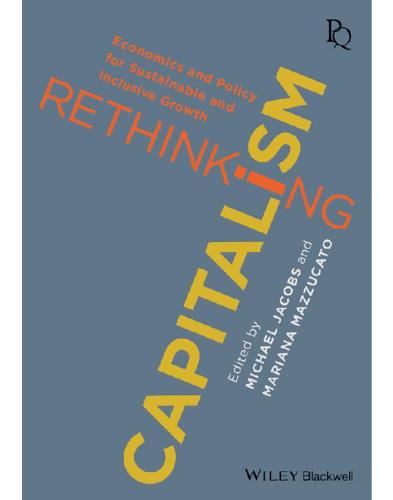
Rethinking Capitalism: Economics and Policy for Sustainable and Inclusive Growth
by
Michael Jacobs
and
Mariana Mazzucato
Published 31 Jul 2016
Lazonick and Tulum argue that this has led to a prevalence of many ‘product-less’ public companies in the biotech field (what they call PLIPOS, or product-less IPOs), a sign that the VC model is often not able to nurture and support the underlying complex and uncertain knowledge base.60 This problem is especially relevant in the emerging clean-technology sector, where venture capital—where it invests at all—produces the quick in/out funding dynamics that result in bankruptcies such as that of Solyndra in 2012. Indeed, Solyndra’s key business backers were venture capitalists, and, like all venture capitalists, they eagerly awaited an IPO, merger or acquisition to provide an ‘exit’ from their investments. But a successful ‘exit’ is not always possible in uncertain markets. When Solyndra’s key investors abandoned their $1.1 billion investment, 1,000 jobs were lost, and a $535 million government-guaranteed loan was wasted. Rather than staying the course, in other words, Solyndra’s investors jumped ship. The irony is that government support often makes companies like Solyndra more attractive to investors, who seek the State’s ‘patient capital’ and respond to its signals.
…
Critics argue that the state is poor at doing this because politicians and bureaucrats lack the capability, information and incentives provided by the market, which are necessary for success.36 However, it is notable that the inability of the state to pick winners is usually an a priori assumption; very few studies have attempted systematically to evaluate industrial policy of this kind.37 The preconception that the state is structurally unable to target technologies and sectors is widespread also because governments tend to take full blame when things go wrong (as in the cases of the loss-making supersonic aircraft Concorde or the failed solar manufacturer Solyndra, discussed further below), while the big successes of state support (such as the internet or various forms of biotechnology, described in the following section) are often attributed exclusively to the private actors that ultimately profited from them. The state as a key actor in the innovation system In fact—contrary to the claims of the traditional ‘market failure’ approach—the state has been a central player in many of the most important innovations of the recent past.
…
But this is indeed normal, as any venture capitalist would admit: for every success there are many failures. The US government has recently experienced this, with a big success, the Tesla S car (which received a $465 million loan guaranteed by the taxpayer), occurring in the same period as a big loss, a $535 million guaranteed loan to the solar manufacturer Solyndra, which later went bankrupt. In reality, the most successful capitalist economies have had active states that made risky investments, some of them contributing to technological revolutions. The Finnish public innovation agency SITRA has had some great successes, but also some failures. Likewise Israel’s public venture capital fund Yozma.
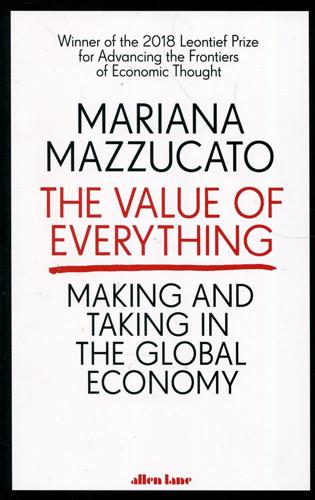
Value of Everything: An Antidote to Chaos The
by
Mariana Mazzucato
Published 25 Apr 2018
For every Internet (a success story of US government financing), there are many Concordes (a white elephant funded by the British and French governments). Consider the twin tales of Solyndra and Tesla Motors. In 2009, Solyndra, a solar-power-panel start-up, received a $535 million guaranteed loan from the US Department of Energy; that same year, Tesla, the electric-car manufacturer, got approval for a similar loan, of $465 million. In the years afterwards, Tesla was wildly successful, and the firm repaid its loan in 2013. Solyndra, by contrast, filed for bankruptcy in 2011, and among fiscal conservatives became a byword for the government's sorry track record when it comes to picking winners.
…
The problem, however, is that governments, unlike venture capital firms, are often saddled with the costs of the failures while earning next to nothing from the successes. Taxpayers footed the bill for Solyndra's losses - yet got hardly any of Tesla's profits. Strangely, the US government had put in a claim for 3 million shares into Tesla only if it did not pay back the loan - almost as if the US government has an interest in owning a part of failed companies! Tesla did pay back the loan in 2013, and so had the US government taken a stake in Tesla as a success rather than as a failure, it would have been able to more than cover its losses from Solyndra. The year Tesla received its government loan, the company went public at an opening price of $17 a share; that figure had risen to $93 by the time the loan was repaid.
…
The Concorde aircraft did not result in a commercialized plane. Most R&D in new drugs leads to nothing. And guaranteed loans are made to companies which fail, a recent example, as we have seen, being the $528 million provided by the US Department of Energy to the company Solyndra in 2005 for the production of solar cells. When the price of silicon chips fell dramatically soon after, Solyndra went bankrupt, leaving the taxpayer to pick up the bill.68 Yet any venture capitalist will say that innovation involves exploring new and difficult paths, and that occasional failure is part of that journey. The guaranteed loan ($465 million) provided to Tesla for the development of the Model S electric car was, as we saw in Chapter 7, a success.

The Powerhouse: Inside the Invention of a Battery to Save the World
by
Steve Levine
Published 5 Feb 2015
Department of Energy investments were a primary target of harsh Obama critics. The furor centered on Solyndra, a California solar power company that was awarded a $535 million stimulus loan and then filed for bankruptcy. Solyndra, critics said, exemplified the folly of “picking winners”—of favoring specific companies rather than general swaths of potential economic prosperity in which any enterprise might emerge a success. The loan, they said, was particularly suspect given that a Department of Energy official handling it was simultaneously a presidential campaign fund-raiser and married to a Solyndra lawyer. In fact, ARPA-E and other programs were picking winners.
…
The question was whether they picked wisely. In any case, while the wisdom of the Solyndra loan was debatable, its origins were in the Bush administration. ARPA-E was modeled after DARPA, a Pentagon research agency whose mission was to fund highly unusual ideas that otherwise might never be tried out. Solyndra, with its bet on a niche thin-film technology, fit that operating principle. The solar market had turned against everyone. The politics remained unforgiving. In Washington, Republican congressmen held hearings accusing Solyndra executives and Obama officials of corruption. American voters would go to the polls in nine months.
…
Envia’s offer was extremely attractive, perhaps superior financially to the one to come any day from Argonne. But, in the spirit of friendly advice, he wanted to make sure that Croy understood, in case he didn’t already, the reality of the Bay Area. “There are enormous risks going to Envia,” he said. “Look at Solyndra. It could be shuttered in two years. Silicon Valley eats people up.” He went on: At this point—pre-IPO—it is intoxicating. You can believe the hype because you want to. They dangle options in front of you. But there is no way to predict if Envia is a mirage. Even if you knew all the data. I am not talking Envia down—I think they have a great shot at it.
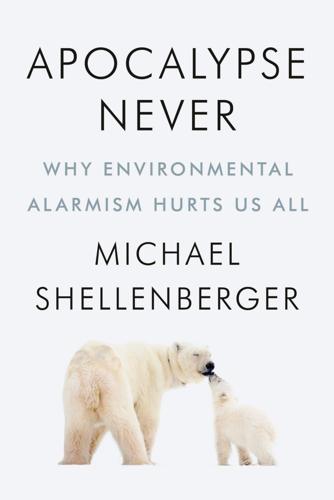
Apocalypse Never: Why Environmental Alarmism Hurts Us All
by
Michael Shellenberger
Published 28 Jun 2020
Travis Hoium, “Solar Shake-up: Why More Bankruptcies Are Coming in 2017,” The Motley Fool, April 18, 2017, https://www.fool.com. Travis Hoium, “Bankruptcies Continue in Solar Industry,” The Motley Fool, May 19, 2017, https://www.fool.com. 76. As an example, Solyndra’s bankruptcy led to its abandonment of a cadmium waste storage facility in Milpitas, California, due to the facts that the facility was not financed by Solyndra’s federal loan guarantees and that Solyndra had not made much money prior to its bankruptcy. Dustin Mulvaney, Solar Power: Innovation, Sustainability, and Environmental Justice (Oakland: University of California Press, 2019), 83–84. 77. Daniel Wetzel, “Study Warns of Environmental Risks from Solar Modules,” Die Welt, May 13, 2018, https://cloudup.com/c1xW_Mk$f85. 78.
…
Department of Energy (DOE) “treated applicants inconsistently in the application review process, favoring some applicants and disadvantaging others.”88 But the loans were just one program among many others that funneled money to well-connected Obama donors without creating many jobs. The most famous of the green investments was when DOE gave $573 million to a solar company called Solyndra, 35 percent of which was owned by a billionaire donor and fundraising bundler for Obama, George Kaiser. Nobody wanted to invest in Solyndra because its panels were too expensive, which independently minded DOE staffers pointed out. They were overruled, however, and the loan was approved. The people who benefited the most from the green stimulus were billionaires, including Musk, Doerr, Kaiser, Khosla, Ted Turner, Pat Stryker, and Paul Tudor Jones.
…
Frank Rusco, Recovery Act: Status of Department of Energy’s Obligations and Spending, Testimony Before the Subcommittee on Oversight and Investigations, Committee on Energy and Commerce, House of Representatives, GAO-11-483T, 10 (Washington, D.C.: Diane Publishing, March 17, 2011). 89. Carol D. Leonnig and Joe Stephens, “Energy Dept. E-mails on Solyndra Provide New Details on White House Involvement,” Washington Post, August 9, 2012, https://www.washingtonpost.com. Schweitzer, Throw Them All Out, 96. 90. Ibid. 91. “Reply Comments of Tesla, Inc. on Proposed Decision Approving Retirement of Diablo Canyon Nuclear Power Plant,” August 11, 2016, Decision, http://docs.cpuc.ca.gov/PublishedDocs/Efile/G000/M201/K923/201923970.PDF; “California home battery rebate: Self-Generation Incentive Program (SGIP) explained,” Energy Sage, December 6, 2019; https://news.energysage.com.

Open: The Story of Human Progress
by
Johan Norberg
Published 14 Sep 2020
‘While that is good for us, I can’t imagine it’s a good way for the government to use taxpayer money,’ said one investor in the California solar company Solyndra, describing a very favourable government loan in 2009. Government favours also change companies’ priorities, from making customers happy to making politicians happy. One board member claimed Solyndra’s company founder survived only because of his close relationship with the Obama administration. Within a week of getting the first loan, Solyndra applied for another, worth $400 million. Those who don’t risk their own money don’t devote the same efforts to make sure the investment pays off.
…
Those who don’t risk their own money don’t devote the same efforts to make sure the investment pays off. One Management and Budget official complained the Department of Energy’s loan process for Solyndra had ‘barely any review of materials submitted, no synthesis for program management and inherent conflicts in origination of team members monitoring the deals they structured’. As President Obama’s chief economic adviser Larry Summers summed it up: ‘Government is a crappy venture capitalist.’ In 2011, Solyndra filed for bankruptcy.69 Everything is a knowledge problem The dynamist response to global warming and every other problem starts with the Socratic insight that the beginning of wisdom is to be aware of our own ignorance.
…
(Fukuyama), 362–5 End of Work, The (Rifkin), 312 Engels, Friedrich, 33, 36, 162, 206, 247, 256 English Civil War (1642–1651), 148, 183, 184, 201 Enigma machine, 124–6 Enlightenment, 4, 5, 6, 13, 103, 154–60, 165–6, 195–6 Environmental Performance Index, 327 Ephesus, 45 Epic of Gilgamesh, The, 38 Epicurus, 134–5 Epstein, Richard, 320 equality matching, 262–6, 267 Erasmus, 152 Erdogan, Recep Tayyip, 354 Ethiopia, 72, 130 ethnocentrism, 219, 271 Etruscan civilization (c. 900–27 BC), 43 Eubulus, 47 eugenics, 109 Euphrates river, 37 Euripides, 132 European Organization for Nuclear Research, 306 European Parliament, 325 European Union (EU) Brexit (2016–), 9, 14, 118, 238, 240–41, 349, 354, 379 common currency, 280–81 freedom of movement, 118, 343 migration crisis (2015–), 10, 114, 115, 342–3, 358 subsidies in, 280 trade and, 272 United States, trade with, 19 Evans, Oliver, 203 Evolution of God, The (Wright), 249 evolutionary psychology, 14, 23, 225 exoticism, 84 Expressionism, 198 Facebook, 239, 309 Falwell, Jerry, 113–14 Farage, Nigel, 241 farming, see agriculture Fascist Italy (1922–1943), 105, 219 FedEx, 319 Feifer, Jason, 290–92 Fenway Park, Boston, 223 Ferdinand II, King of Aragon, 97, 98, 106 Ferguson, Charles, 314 Fermi, Enrico, 105 Ferney, France, 153 feudalism, 92, 194, 202, 208 fight-or-flight instinct, 15, 346, 348–9 filter bubbles, 239 financial crisis (2008), 10, 15, 62, 254, 333, 358, 359–60 fire, control of, 32–3, 76 Flanders, 208 fluyts, 100 Flynn effect, 109 Fogel, Robert, 276 folk economics, 258–62 football, 223–4, 245–6 Forbes, 274 Ford, Henry, 203 Fortune 500 companies, 82 Fox News, 82, 302, 354 France, 151 American Revolutionary War (1775–83), 201 automation in, 313 Cathars, 94, 142 Cobden–Chevalier Treaty (1860), 53–4 corruption in, 345 Dutch War (1672–8), 101 Encyclopédie, 154 free zones in, 180–81 Huguenots, persecution of, 97, 99, 101, 158, 193 immigration in, 115 Jews, persecution of, 96, 97, 254 languages in, 289 Minitel, 313 Revolution (1789–99), 201, 292 Royal Academy of Sciences, 156 ruin follies, 287 St Bartholomew’s Day massacre (1572), 97 Thököly Uprising (1678–85), 137 Uber in, 320 University of Paris, 140, 141–2, 143 Francis I, Emperor of Austria-Hungary, 178 Franciscans, 144 Franklin, Benjamin, 107 Franks, 92 free speech, 127, 131–2, 160, 163–5, 343 Chicago principles, 164–5 emigration for, 152–3 university campuses, 163–5 free trade, see under trade Fried, Dan, 289 Friedman, Benjamin, 253 Friedman, David, 284 Friedman, Thomas, 325 Friedrich Wilhelm I, King of Prussia, 153 Fukuyama, Francis, 362–5 Fulda, Germany, 179, 180 Future and Its Enemies, The (Postrel), 300 Future of Nostalgia, The (Boym), 288 Galatia, 90 Galaxy Zoo, 80 Galilei, Galileo, 146, 150 Gallup, 164 game theory, 26 Gandhi, Indira, 326 gas lighting, 297 Gates, William ‘Bill’, 274, 277, 309 Gauls, 90, 91, 92 gay rights, 113, 336 Geary, Patrick, 288–9 gender equality, 113, 114 General Motors, 64 generations baby-boom generation (1946–64), 294, 340 generation X (1965–80), 340 immigration and, 106, 110–11, 113–14 interwar generation (1928–45), 340 millennial generation (1981–96), 340 nostalgia and, 291, 293–4, 296 genetically modified organisms (GMO), 299, 301 Geneva, Switzerland, 152, 153 Genghis Khan, 94–5, 96, 174 Genoa, Republic of (1005–1797), 73, 178 George II, King of Great Britain and Ireland, 193 George III, King of Great Britain and Ireland, 103, 193 George Mason University, 257, 258 Georgia, 365 Georgia, United States, 349 German Conservative Party, 254 Germany automatic looms, 179 Berlin Wall, fall of (1989), 10, 340, 341, 363, 364 Bronze Age migration, 75 budget deficits, 60 COVID-19 pandemic (2019–20), 12 guilds in, 190 immigration in, 114, 115 Jews, persecution of, 99, 104–6, 109, 220, 233 migration crisis (2015–), 342–3 Nazi period (1933–45), 104–6, 109, 124, 220, 233, 353 Neolithic migration, 74 protectionism in, 314 Reichstag fire (1933), 353 Thirty Years War (1618–48), 150 United States, migration to, 104, 107–8, 111 Weimar period (1918–33), 353 al-Ghazali, 139 Gholia, 89 Gibbon, Edward, 90 Gilder, George, 314 Gilgamesh, 38 Gillis, John, 291 Gingrich, Newton, 313 Gini coefficient, 273 Gintis, Herbert, 36 global history, 13 global price crisis (2010–11), 11 global warming, 75, 323, 325, 326–34 globalization, 4, 55, 270 backlashes against, 9, 14, 54, 57 cities and, 35 classical world, 43–50 conspiracy theories on, 323 disease and, 11, 77–9 United States and, 19 Westernization, 4 Glorious Revolution (1688), 101, 185–8, 190, 193 Goa, India, 146–7 golden nugget theory, 5 Golden Rule, 251–2 Golding, William, 219, 243, 244 Goldstone, Jack, 5, 133, 353 Goodness Paradox, The (Wrangham), 227 Google, 309, 311 Gordon, Thomas, 201 Göring, Hermann, 106 gossip, 229 Goths, 92 Gottlieb, Anthony, 135 Great Awakening (1730–55), 102 Great Depression (1929–39), 54–5, 56, 254 Great Enrichment, 167, 204 Great Recession (2007–9), 254–5, 358, 359–60 Great Transformation, The (Polanyi), 37 Great Vanishing, 134–5 Great Wall of China, 178 Greece, ancient, 127–32, 169 Athens, 47, 53, 89, 90, 131–2, 134 Axial Age, 129 cosmopolitanism, 87–8 golden nugget theory, 5 Ionian enlightenment, 127–9 Mycenae, 88 philosophy, 13, 70, 127–32, 134–5, 136 Phoenicians, relations with, 43, 44, 45, 46 science, 127–32, 136 Sparta, 47, 54, 90, 132 trade, attitudes towards, 47, 54 xenophobia in, 90 Green New Deal, 302 Greene, Joshua, 216, 259 Greenland, 51 Gregorian calendar, 137, 152 Gregory IX, Pope, 142 Gregory XIII, Pope, 152 gross domestic product (GDP), 68–9, 257, 278–9 Grotius, Hugo, 147, 152–3 groupthink, 83 Guangzhou, Guangdong, 352 guilds, 190 Gutenberg, Johannes, 146 Haber, Fritz, 105 Habsburg Empire (1282–1918) anti-Semitism in, 254 Austria, 151, 179, 190 refugees, 99 Spain, 98–9, 208 Hadrian, Roman Emperor, 91 Hadrian’s Wall, 47 Hagley Park, West Midlands, 286–7 Haidt, Jonathan, 163, 229, 344, 348, 357 Haile Selassie, Emperor of Ethiopia, 72 Hamas, 365 Hangzhou, Zhejiang, 173 Hanseatic League (1358–1862), 53 Hanson, Robin, 282 Hanway, Jonas, 298 Happy Days, 294 Harari, Yuval Noah, 38 Harriot, Thomas, 150 Hartsoeker, Nicolaas, 159 Harvard Business Review, 313 Harvard University, 116, 122, 137, 253, 309, 313 Haskell, Thomas, 206 Hässelby, Stockholm, 217–18, 245 Hayashi, Stuart, 370 Hayek, Friedrich, 1, 7, 29, 300, 325 Hebrew Bible, 248–50 Hegel, Georg Wilhelm Friedrich, 288, 365 Helm, Dieter, 328, 331 Henrich, Joseph, 36 Hercules, 87 Herodotus, 132 Hewlett-Packard, 304 Higgs, Robert, 337 Hill, Christopher, 182 Hinduism, 136, 149, 354 von Hippel, William, 24, 25, 262, 284 Hippocrates, 128 Hispanic people, 110–11 Hitler, Adolf, 104–5, 353 Hobbes, Thomas, 9, 152, 226 Hofer, Johannes, 288 Holmgren, Pär, 325 Holocaust (1941–5), 109, 220 Holy Roman Empire (800–1806), 155, 181, 288 Homestead Acts, 171 Homo economicus, 34, 36 Homo erectus, 76, 267 Homo sapiens, 3, 21, 23, 30–33, 76, 259–62, 282, 371 homosexuality, 79, 113–14, 336 Homs, Syria, 82 Honeywell, 303 Hong Kong, 53, 235, 316 Hoover, Herbert, 55 horseshoes, 203 House of Wisdom, Baghdad, 136 Household Narrative, The, 297 housing, 375–6 Huguenots, 97, 99, 101, 158, 193 human rights, 87, 147, 213 humanitarianism, 204–7 Hume, David, 151, 154, 194 Hungary, 105, 190, 235, 237, 354, 357 hunkering down, 121, 165 Huns, 93 hunter-gatherer societies death rate, 9 disease and, 78 division of labour and, 29, 32, 40–41, 57 equality matching, 262–3, 265 inbreeding and, 78 isolation and, 52 migration, 73–4, 78–9 physical fallacy, 268 race and, 232 trade, 265 tyranny of cousins, 230 Huntington, Samuel, 110, 362–3, 365–6 Hussein, Saddam, 345 Hussey, Edward, 287 Hutchins, Robert Maynard, 165 Hutus, 230–31 Hypatia, 134 hyper-fast stars, 80 IBM, 305, 307, 319 Ibn al-Haytham, 156 Ibn Hayyan, Jabir, 156 Ibn Rushd, 137–8, 143, 144, 145 ice core drilling, 49 Identity & Violence (Sen), 231 identity politics, 241 al-Idrisi, Muhammad, 137 immigration birth rates and, 115 crime and, 110, 119 culture and, 69–73, 116, 119, 120–23 disgust and, 336, 371 division of labour and, 117 empires and, 84–106 European migration crisis (2015–), 10, 114, 115, 118, 342–3 exoticism, 84 GDP and, 68 innovation and, 81–4 Islam and, 112–14, 255 labour market and, 115, 116–19 opposition to, 69, 70, 114–23, 223, 254–5 productivity and, 68, 81, 117, 204 protectionism and, 66–7 self-selection and, 107, 112 skilled vs unskilled, 66, 82, 102, 116, 117 trade and, 35, 66–7, 234–5 tribalism and, 223, 235–6, 240, 243 urban vs rural areas, 114 welfare and, 118, 281 zero-sum thinking and, 254–5, 259 immigration in United States, 102–14 crime and, 110, 119 innovation and, 81–2, 202 overestimation of, 115, 223 tribalism and, 223, 240 zero-sum thinking and, 254–5, 259 In Defence of Global Capitalism (Norberg), 270 in vitro fertilization, 298–9 inbreeding, 78 India, 42, 45, 46, 56, 75, 129, 136, 140, 146, 270 Arabic numerals, 70, 137 engineering in, 269 Hindu nationalism, 354 industrialization, 207 Maurya Empire (323–184 BC), 53 Mughal Empire (1526–1857), 98, 148, 149, 215 national stereotypes, 235 Pakistan, relations with, 366 pollution in, 326 poverty in, 276, 326 Indo-European language, 75 Indonesia, 41 Industrial Revolution; industrialization, 5, 6, 13, 54, 132, 180, 339 in Britain, 182, 188–99, 202 in China, 169, 172–3, 207 climate change and, 326 in Dutch Republic, 101 in India, 207 in Japan, 71 in United States, 202, 291–2 in Vietnam, 207 inequality, 273, 349 Inglehart, Ronald, 339 ingroups and outgroups, 217–47 fluidity, 230–38 political, 224–5, 238–42 zero-sum relationships and, 252–5 Innocent III, Pope, 233 InnoCentive, 126–7 innovation, 4, 6, 10, 27, 80 ancient world, 32, 42, 44, 46 authoritarianism and, 318 bureaucratic inertia and, 318–21 canon and, 195 cities and, 40, 53, 79 creative destruction, 57, 179, 182, 190 cultural evolution, 28 immigration and 81–4 patent systems, 189–90 population and, 27, 51, 53 Schumpeterian profits, 273–5 resistance to, 10, 179–81 zero-sum thinking and, 266–9 Inquisition, 150 France, 94, 143 Portugal, 100 Spain, 97, 98 intellectual property, 58 Intergalactic Computer Network, 307 International Monetary Fund (IMF), 117 Internet, 57, 275, 278, 306–11, 312, 313 interwar generation (1928–45), 340 Inuit, 22, 51 Ionian enlightenment, 127–9 IQ (intelligence quotient), 109 Iran, 365 Ireland, 104, 108–9, 111, 112, 379 iron, 172 Isabella I, Queen of Castile, 97 Isaiah, 46 Isaura Palaia, Galatia, 90 Isenberg, Daniel, 296 Isis, 89 Islam; Islamic world Arab Spring (2011), 10, 342 clash of civilizations narrative, 237, 365 conflict within, 365 efflorescence, 6, 53, 136–41 fundamentalism, 112, 134, 139, 351 Koran, 137, 250–51 migration from, 112–14 orthodox backlash, 148–9 philosophy, 5, 13 science, 70, 132, 136–41 values in, 112, 113 Islamic State, 351, 365–6 Islamic world, 5, 6, 13, 53, 70 Israel, 111, 365 Italy, 6, 151, 169 anti-Semitism in, 254 Fascist period (1922–1943), 105 Genoa, Republic of (1005–1797), 73, 178 guilds in, 190 Lombard League (1167–1250), 181 Ötzi, 1–2, 8–9, 73, 74 Padua, 144, 146 Papacy in, 155, 181 Renaissance, 6, 150, 153, 169 United States, migration to, 104, 109 Venice, Republic of (697–1797), 53, 144, 152, 174, 181 Jacobs, Jane, 39–40, 79, 264 James II and VII, King of England, Scotland and Ireland, 185–6 Jamestown, Virginia, 200 Japan housing in, 376 kimonos, 73 Meiji Restoration (1868), 53, 70–71 protectionism, 314 Tokugawa Shogunate (1600–1868), 54 United States, migration to, 104, 236, 335 Japanning, 156 JavaScript, 310 jealous emulation, 154–7 jeans, 73 Jefferson, Thomas, 103, 184, 201, 205 Jenner, Edward, 296 Jerusalem, 87, 251 Jesus, 250 Jews in Abbasid Caliphate, 136 anti-Semitism, 254–5, 356 Ashkenazim, 99 Babylonian captivity, 87, 249 Bible, 46, 72, 248–50 Black Death and, 355–6 in Britain, 101, 193 in Dutch Republic, 99, 100, 150 in Germany, 99, 104–6, 109, 111, 254 Inquisition and, 97, 98 in Israel, 111 Mongol invasion and, 95 Muhammed and, 251 Nazirites, 72 in Ottoman Empire, 98 persecution of, 11, 95–7, 109, 220, 233, 251, 355–6 in Poland, 111, 220 in Roman Empire, 90, 93, 94 Sephardim, 99 in Song Empire, 170 in Spain, 97, 98, 99, 140 in United States, 102, 109 Jim Crow laws (1877–1965), 106, 254 Job Buddy, 375 Jobless Future, The (Aronowitz), 312 Jobs, Steven, 82, 304 John Chrysostom, 135 John III Sobieski, King of Poland, 237, 238 Johnson, Samuel, 191, 197 Johnson, Steven, 306 Jones, Rhys, 51 Joule, James Prescott, 196 Judaism, 46, 72, 93, 94, 96, 97 Jupiter, 145 Jurchen people, 172 Justinian I, Byzantine Emperor, 134, 224 Kahn, Robert, 307 Kandinsky, Wassily, 220–21, 289 Kant, Immanuel, 154 Karakorum, Mongol Empire, 96 al-Karaouine, Morocco, 137 Kearney, Denis, 109 keels, 44 Kenya, 21–2 Khayyam, Omar, 137 al-Khwarizmi, 137 Kiesling, Lynne, 328 Kim Jong-il, 314–15 kimonos, 73 King, Martin Luther, 19 King, Steven, 111 Kipling, Rudyard, 70 Klee, Paul, 220–21, 289 Know-Nothings, 108–9 Kodak, 319 Koran, 137, 250–51 Kramer, Samuel Noah, 37, 292 Krastev, Ivan, 342–3 Krugman, Paul, 309 Ku Klux Klan, 254 Kublai Khan, 174 Kurds, 136 Kushim, 37–8 labour mobility, 69, 374–7 lacquerware, 156 lactose, 75 Lao Tzu, 129 lapis lazuli, 70 Late Bronze-Age Collapse (1200–1150 BC), 44, 49, 54 Lebanon, 43, 236 Lee, William, 179 leisure, 199 Lenin, Vladimir, 256 Lesbos, 141 Levellers, 183–4, 186 Leviathan (Hobbes), 152 Levinovitz, Alan Jay, 290 Levy, David, 205 Lewis, David Levering, 140 Libanius, 49 liberalism, 14, 183, 334–40 colonialism and, 214 disgust and, 335, 336 dynamism and, 301 economic, 185, 336 Islam and, 112–14 security and, 334–40, 378 slave trade and, 205 universities and, 163 Libya, 48, 89, 366 Licklider, Joseph Carl Robnett, 307 life expectancy, 4, 169, 339 light bulbs, 297 Lilburne, John, 183 Lincoln, Abraham, 203 Lind, Amanda, 72 Lindsey, Brink, 301 literacy, 15, 57, 168 in Britain, 188, 198 in China, 148 in Dark Ages, 50 empathy and, 246–7 in Greece, 128–9 in Renaissance, 146, 148 Lithuania, 238 Little Ice Age, 148 lobbying, 280, 329 Locke, John, 100, 152, 185, 186, 201 Lombard League, 181 London, England, 190, 193–4, 197 7/7 bombings (2005), 341 London Bridge stabbings (2019), 120 Long Depression (1873–86), 253–4 Lord of the Flies (Golding), 219, 243, 244 Lord’s Resistance Army, 365 Louis IX, King of France, 96 Louis XIV, King of France, 237 Louis XVI, King of France, 201 love, 199 Lucas, Robert, 167 Lucy, 24–5 Lugh, 89 Lul, 111 Luther, Martin, 150, 356 Lutheranism, 99, 356 Lüthi, Max, 351 Lysenko, Trofim, 162 Lyttelton family, 286 Macartney Mission (1793), 176 Macedonian Empire (808–148 BC), 84, 87–9 Madison, James, 337 madrasas, 138 Madrid train bombings (2004), 341 Maduro, Nicolás, 354, 380 Magna Carta (1215), 5 Magris, Claudio, 219 Malacca, 100 Maltesholm School, Hässelby, 217–18, 245 mammoths, 76 Manchester United, 246 Manichaeism, 93 Mann, Thomas, 79 Mansfield, Edward, 271 Mao Zedong, 53, 162, 315, 316, 317, 355 Marcus Aurelius, Roman Emperor, 91 Marduk, 87 de Mariana, Juan, 147 markets, 37 humanitarianism and, 204, 206 immigration and, 68 tribalism, 247 ultimatum game, 34–5 Marley, Robert ‘Bob’, 72 marriage, 199 Marshall, Thurgood, 335 Marx, Karl, 33, 36, 162, 169, 247, 255–6 Marxism, 33, 36, 162, 182, 256, 268 Mary II, Queen of England, Scotland and Ireland, 186, 193 Maryland, United States, 349 Maslow, Abraham, 339, 341 al-Masudi, 136 mathematics, 70, 134, 135, 137, 156 Maurya Empire (323–184 BC), 53 Mauss, Marcel, 71 McCarthy, Joseph, 335 McCarthy, Kevin, 108 McCloskey, Deirdre, 167, 189, 191–2, 198 McConnell, Addison Mitchell ‘Mitch’, 108 McKinsey, 313 measles, 77 media, 346–9, 370 Medicaid, 119 Medina, 251 Medusa, 88 Meiji Restoration (1868), 53, 70–71 Mencken, Henry Louis, 325, 353 Mercury, 89 Merkel, Angela, 343 Mesopotamia, 37–43, 45, 70, 292–3 Metaphysics (Aristotle), 142 Mexico, 73, 77, 257 United States, migration to, 110, 122, 223, 240, 255 Miami, Florida, 120 Micro-80 computers, 304 Microsoft, 305–6, 309 middle class, 60–61 Migration Advisory Committee, UK, 118 Miletus, 127 militarism, 214 Mill, John Stuart, 124, 160, 164, 176, 319 millennial generation (1981–96), 340 Milton, John, 150 Ming Empire (1368–1644), 54, 148, 175, 177–8, 179, 215 minimal group paradigm, 220–22 Minitel, 313 Mobutu Sese Seko, 187 Mokyr, Joel, 157, 195, 196–7 Molyneux, Stefan, 84 Mongol Empire (1206–1368), 53, 84, 94–7, 138, 139, 173–4, 352–3 monopolies, 182, 189 Monte Testaccio, 48 Montesquieu, 89, 94 Moral Consequences of Growth, The (Friedman), 253 Moral Man and Immoral Society (Niebuhr), 253 Moriscos, 97 mortgages, 375 Moscow Institute of Electronic Engineering, 304 most-favoured-nations clause, 53–4 Mughal Empire (1526–1857), 98, 148, 149, 215 Muhammed, Prophet of Islam, 251 Murray, William Vans, 104 Muslims migration of, 112–14, 170, 255 persecution of, 97, 106, 233, 355 Mutz, Diana, 271 Mycenae, 88 Myth of Nations, The (Geary), 288–9 Myth of the Rational Voter, The (Caplan), 258 Naipaul, Vidiadhar Surajprasad, 167 Napoleonic Wars (1803–15), 288 National Aeronautics and Space Administration (NASA), 126, 127 National Library of Medicine, US, 12 National Science Foundation, US, 313 National Security Agency, US, 313 national stereotypes, 235 nationalism, 9, 11, 13, 16 civic nationalism, 377–8 clash of civilizations narrative, 237 cultural purity and, 69, 70, 71, 352 immigration and, 69, 70, 82 nostalgia and, 287–8, 351 World War I (1914–18), 214 zero-sum thinking, 253, 254, 259, 272 nativism, 14, 122, 176, 223, 254, 349–51, 358 Natural History Museum, London, 124, 125 Naturalism, 198 Nazi Germany (1933–45), 104–6, 109, 124, 220, 233, 353 Nazirites, 72 Neanderthals, 30–33, 75, 76 Nebuchadnezzar, Babylonian Emperor, 46 neckties, 72 negative income tax, 374–5 Neilson, James Beaumont, 194 Nemeth, Charlan, 83 Neo-Classicism, 198 Neolithic period (c. 10,000–4500 BC), 74 Netflix, 309, 310 Netherlands, 99 von Neumann, John, 105 neurasthenia, 291 New Atlantis (Bacon), 147 New Guinea, 41 New Testament, 250 New York, United States crime in, 246, 334 September 11 attacks (2001), 10, 114, 340–42 New York Times, 291, 297, 325 New York University, 223 New York Yankees, 223 Newcomen, Thomas, 196 Newton, Isaac, 158–9, 201 Nicomachean Ethics (Aristotle), 131 Niebuhr, Reinhold, 253 Nietzsche, Friedrich, 365 Nîmes, France, 73 Nineteen Eighty-Four (Orwell), 230, 368 Nineveh, Assyria, 248–9 Nixey, Catherine, 134 Nobel Prize, 82, 105, 276 non-market societies, 34, 35 Nordhaus, William, 273–4 North American Free Trade Agreement (NAFTA), 63, 64 North Carolina, United States, 102 North Korea, 54, 314–15, 366 North Star, 44 nostalgia, 14, 286–95, 313, 351 Not Fit for Our Society (Schrag), 107 novels, 188–9, 246–7 nuclear power, 301, 327, 328, 329, 332 nuclear weapons, 105, 290, 306 O’Rourke, Patrick Jake, 280 Oannes, 267 Obama, Barack, 66, 240, 329 obsidian, 22, 29 occupational licensing, 376–7 Ögedei Khan, 96 Ogilvie, Sheilagh, 179 Oklahoma, United States, 218–19 Old Testament, 46, 72, 248–50 olive oil, 48 Olorgesailie, 21–2 omnivores, 299 On Liberty (Mill), 160 one-year-old children, 26 open society, 6 open-mindedness, 35, 112 Opening of the mouth’ rite, 70 Orbán, Viktor, 354, 380 de Orta, Garcia, 146–7 Orwell, George, 230, 368 Osman II, Ottoman Sultan, 148 Ottoman Empire (1299–1923), 84, 94, 98, 148, 215, 220, 237, 353 Ötzi, 1–2, 8–9, 73, 74 overpopulation, 81, 160 Overton, Richard, 183 Pacific islands, 52 Paine, Thomas, 56, 158, 247 Pakistan, 70, 366 Pallas Athena, 89 Pallavicino, Ferrante, 150 Palmer, Tom Gordon, 15 Panthers and Pythons, 243–4 Papacy, 102, 142, 143, 152, 155, 178 Papin, Denis, 179, 180 Paris, France exiles in, 152, 153 University of Paris, 140, 141–2, 143 parochialism, 216 patent systems, 58, 82, 189–90, 203, 314 in Britain, 179, 189–90, 203, 314 in China, 58 in France, 189 immigrants and, 82 in Netherlands, 189 in United States, 203 PayPal, 310 Peasants’ Revolt (1381), 208 peer review, 127 Pence, Michael, 108 penny universities, 166 Pericles, 131 Permissionless Innovation (Thierer), 299 Perry, Gina, 243 Perseus, 87–8 Persia, ancient, 84, 86–7, 88, 95, 129, 215 Abbasid period (750–1258), 136 Achaemenid Empire (550–330 BC), 86–7, 88 Greeks, influence on, 129 Mongols, influence on, 95 Safavid Empire (1501–1736), 149 Sasanian Empire (224–651), 134 personality traits, 7 Pertinax, Roman Emperor, 91 Pessimists Archive, 290, 297, 298 Pessinuntia, 89 Peters, Margaret, 66 Peterson Institute for International Economics, 60 Petty, William, 296 Philip II King of Spain, 98 Phoenicia (2500–539 BC), 43–6, 49, 70, 128–9 Phoenicia dye, 44 Phrygians, 89 physical fallacy, 267–8 Physics (Aristotle), 142 Pietists, 153 Pinker, Steven, 23, 243, 266, 324 Plague of Justinian (541–750), 77 Plato, 130, 131, 132, 134, 352 pluralism, 85, 129, 357 Plutarch, 45–6 Poland Battle of Vienna (1683), 237, 238 Dutch Republic, migration to, 99 Holocaust (1941–5), 220 immigration, 116 Israel, migration to, 111 United Kingdom, migration to, 120 United States, migration to, 108, 109 Polanyi, Karl, 37 polio, 293 pollution, 326, 347 Polo, Marco, 174 Popper, Karl, 6, 26, 127, 129, 130, 182–3, 237, 362 population density, 28 populism, 9, 13, 14, 16, 324, 379–82 authoritarianism and, 325, 350–51 complexity and, 324 nostalgia and, 295, 324, 351 trade and, 19 zero-sum thinking and, 254, 259, 274 pornography, 113, 336 Portugal Empire (1415–1999), 100, 146–7, 178 guilds in, 190 Inquisition, 100 Postrel, Virginia, 300, 312, 326 pound locks, 172 poverty, 4, 168, 213, 270 in Britain, 256 in China, 4, 316 immigration and, 66, 69, 81, 121 in Japan, 71 Jeff Bezos test, 275–9 Preston, Lancashire, 190 priests, 41, 128 printing, 146, 153, 171 Pritchard, James Bennett, 43 productivity cities and, 40 foreign trade and, 57, 59, 63 free goods and, 278 immigration and, 68, 81, 117, 204 programming, 8 Progress (Norberg), 12–13 progressives, 286, 300–302 Proserpina, 89 protectionism, 13, 15, 16, 54–5 Great Depression (1929–39), 54–5 immigration and, 66–7 Internet and, 314 Trump administration (2017–), 19, 57–8 Protestantism, 99, 104, 148, 149, 153, 169, 178, 237 Prussia (1701–1918), 153, 288 Psychological Science, 335 Puerto Rico, 80 Pufendorf, Samuel, 147 purchasing power, 59, 61, 63, 66, 198 Puritanism, 99, 102 Putin, Vladimir, 14, 353–4 Putnam, Robert, 121, 165 Pythagoras, 137 Pythons and Panthers, 243–4 al-Qaeda, 351 Qianlong, Qing Emperor, 153 Qing Empire (1644–1912), 148, 149, 151, 153, 175–7, 179 Quakers, 99, 102, 206 Quarantelli, Enrico, 338 Quarterly Journal of Economics, The, 63 race; racism, 76–7, 206, 231–4, 358–9 railways, 53, 179, 202, 296, 297 Rammstein, 274 RAND Corporation, 307 Raphael, 137 Rastafari, 72 Rattlers and Eagles, 218–19, 236, 243, 252 reactive aggression, 227–8 Reagan, Ronald, 63, 111 Realism, 198 realistic conflict theory, 222 Reconquista (711–1492), 139 Red Genies, 236 Red Sea, 75 Reformation, 148, 155 refugees crime and, 119 European migration crisis (2015–), 10, 114, 115, 281, 342–3 integration of, 117–18 German Jews (1933–45), 104–6, 109 Rembrandt, 99 reminiscence bump, 294 Renaissance, 5, 6, 132, 143, 145–6, 149–50, 215 Republic of Letters, 157–9, 165, 195 Republic, The (Plato), 352 Republican Party, 164, 225, 238, 240, 301 Reynell, Carew, 184 Reynolds, Glenn, 308 Ridley, Matthew, 20–21, 80 right to work laws, 65 Rizzo, Frank, 334 Road to Serfdom, The (Hayek), 325 Robbers Cave experiment (1954), 218–19, 236, 243, 252, 371 Robbins, Caroline, 200–201 Robertson, Marion Gordon ‘Pat’, 114 Robinson, James, 185, 187, 200 rock paper scissors, 26 Rogers, Will, 282 Roman Law, 5 Romanticism, 198, 287, 296–7 Rome, ancient, 47–50, 89–94, 132 Antonine Plague (165–80), 77 assimilation, 91–2 chariot racing, 224 Christianity in, 90, 93–4, 133–4 citizenship, 91 cosmopolitanism, 89–91 fall of, 54, 94 gods in, 89–90 golden nugget theory, 5 globalization, 45–6, 47–50 haircuts, 72 Latin alphabet, 45 philosophy, 70, 136 Phoenicians, relations with, 43, 44 Sabines, relations with, 89 Social War (91–88 BC), 91 trousers, attitudes towards, 92 Romulus, 89, 90 Rotterdam, Holland, 158 Rousseau, Jean-Jacques, 226 Royal Navy, 205 Royal Society, 156, 157, 158, 196 Rubin, Paul, 258 ruin follies, 286–7 rule of law, 68, 189, 269, 334, 343, 358, 379 Rumbold, Richard, 183–4 Rushdie, Salman, 73 Ruskin, John, 206, 297 Russia Imperial period (1721–1917), 154, 289–90 Israel, migration to, 111 Mongol period (1237–1368), 95, 352 Orthodox Christianity, 155 Putin period (1999–), 14, 15, 347, 353–4, 365, 367 Soviet period (1917–91), 162, 302–5, 315, 317 United States, relations with, 236 Yamnaya people, 74–5 Rust Belt, 58, 62, 64–6, 349 Rwandan Genocide (1994), 230–31 Sabines, 89 Safavid Empire (1501–1736), 149 safety of wings, 374 Saint-Sever, France, 180 Salamanca school, 147, 150 Sanders, Bernard, 302 Santa Fe Institute, 216 SARS (severe acute respiratory syndrome), 3, 162 Saudi Arabia, 365 Scandinavia Bronze Age migration, 75 Neolithic migration, 74 United States, migration to, 104, 108 see also Sweden scapegoats, 11, 83, 253, 268, 349, 355–61 Black Death (1346–53), 352, 355–6 Great Recession (2007–9), 255 Mongol invasion (1241), 95 Schmandt-Besserat, Denise, 38 School of Athens, The (Raphael), 137 School of Salamanca, 147, 150 Schrag, Peter, 107 Schrödinger, Erwin, 105, 128, 129, 132 Schumpeter, Joseph, 277 Schumpeterian profits, 273–5 science, 127–66 in China, 4, 13, 70, 153, 156, 162–3, 169–73 Christianity and, 133–5, 141–6, 149–50 Enlightenment, 154–9 experiments, 156–7 Great Vanishing, 134–5 in Greece, 127–32 jealous emulation and, 154–7 in Islamic world, 70, 132, 136–41 Renaissance, 145–6 Republic of Letters, 157–9, 165, 195 sclera, 25 Scotland, 101, 194 Scotney Castle, Kent, 287 Sculley, John, 304 sea peoples, 43 sea snails, 44 Seinfeld, Jerry, 224 Seleucid Empire (312–63 BC), 88 self-esteem, 372, 379 Sen, Amartya, 231 Seneca, 49, 91 Sephardic Jews, 99 September 11 attacks (2001), 10, 114, 340–42, 363 Septimius Severus, Roman Emperor, 91 Servius, Publius, 90 Seven Wonders of the World, 45 Seville, Spain, 91, 139 sex bonobos and, 226 encoding and, 233 inbreeding, 78 views on, 113, 336 SGML (Standard Generalized Markup Language), 307 Shaftesbury, Lord, see Cooper, Anthony Ashley Sherif, Muzafer, 219, 220, 222, 243, 252 Shia Islam, 149 Shining, The, 335 shirts, 72 Siberia, 76 Sicily, 89 Sierra Leone, 365 Siger of Brabant, 143, 144 Sikhism, 149 Silicon Valley, 311 Silk Road, 171, 174, 352 silver processing, 49 Simler, Kevin, 282 Simmel, Georg, 266 Simon, Julian, 81 Simple Rules for a Complex World (Epstein), 320 Singapore, 53 skilled workers, 36, 45, 66, 95, 97, 101, 117 Slater, Samuel, 202 slavery, 86, 156, 205–6, 232 in British Empire, 182, 199, 200, 205 in Mesopotamia, 40, 41, 43 in Rome, 47, 48 in Sparta, 54 in United States, 103, 106, 205, 232 smallpox, 77, 197, 293, 296 Smith, Adam, 21, 59, 192, 194, 205, 280 Smith, Fred, 319 smoke detectors, 234 Smoot–Hawley Tariff Act (1930), 55 snack boxes, 20 Snow, Charles Percy, 105 social media, 239, 347, 370 social status, 281–5 Social War (91–88 BC), 91 Socrates, 130, 131–2, 330 solar power, 328, 329, 331, 332 Solomon, King of Israel, 38, 45 Solyndra, 329 Song Empire (960–1279), 53, 169–75 Sony, 319 Soros, George, 323 South Korea, 314, 366 South Sudan, 365 Soviet Union (1922–91), 162, 302–5, 315, 317 Sovu, Rwanda, 231 Sowell, Thomas, 267–8 Spain, 97–101, 184, 207 Almohad Caliphate (1121–1269), 137–8 amphorae production, 48 al-Andalus (711–1492), 97, 137–9, 140 Columbus’ voyages (1492–1503), 178 Dutch Revolt (1568–1648), 98–9, 101 Empire (1492–1976), 147, 178, 182 guilds in, 190 Inquisition (1478–1834), 97, 98 Jews, persecution of, 97–8, 106, 140 Madrid train bombings (2004), 341 Muslims, persecution of, 97, 106 Reconquista (711–1492), 97, 138–9, 140 regional authorities, 152 Roman period (c.218 BC–472 AD), 48, 91 Salamanca school, 147, 150 sombreros, 73 Uber in, 320 vaqueros, 73 Spanish flu (1918–19), 77 Sparta, 47, 54, 90, 132 Spencer, Herbert, 165, 214 Spinoza, Baruch, 100, 150, 153 Spitalfields, London, 190 sports, 199, 223–4, 232–3, 245–6 Sri Lanka, 100, 365 St Bartholomew’s Day massacre (1572), 97 St Louis, SS, 109 Standage, Tom, 166 Stanford University, 307, 311 Star Trek, 246, 259 stasists, 301–2 Statute of Labourers (1351), 208 steam engine, 179, 180, 189, 194, 203, 296 steamships, 53, 202 Stenner, Karen, 242, 343, 348, 350, 357 Stockholm, Sweden, 217–18 Stranger Things, 294 Strasbourg, France, 153 strategic tolerance, 86–96 Strindberg, August, 239 Suarez, Francisco, 147 suits, 72 Sumer (4500–1900 BC), 37–43, 45, 55, 292–3 Summers, Larry, 329 Sunni Islam, 148, 149, 238, 365 superpowers, 338–9 supply chains, 11, 62, 66 Sweden DNA in, 73 Green Party, 325 Lind dreadlocks affair (2019), 72 immigration in, 114, 115, 118, 281 manufacturing in, 65 Muslim community, 114 Neolithic migration, 74 refugees in, 118, 281, 342 United States, migration to, 107 Sweden Democrats, 281 swine flu, 3 Switzerland, 152, 153 Sylvester II, Pope, 137 Symbolism, 198 Syria, 42, 82, 342, 365, 366 tabula rasa, 225 Tacitus, 91 Taiwan, 316, 366 Taizu, Song Emperor, 170 Tajfel, Henri, 220, 221–2 Tandy, Geoffrey, 124–6 Tang Empire (618–907), 84, 170, 177, 352 Tanzania, 257 Taoism, 129, 149 tariffs, 15, 56, 373 Anglo–French Treaty (1860), 53–4 Great Depression (1929–39), 54–5 Obama’s tyre tariffs (2009), 66 Trump’s steel tariffs (2018), 272 Tasmania, 50–53, 54 Tatars, 238 taxation in Britain, 72, 187, 188, 189 carbon tax, 330–31 crony capitalism and, 279–80 immigration and, 69 negative income tax, 374–5 in Song Empire, 172 in Spanish Netherlands, 98 Taylor, Robert, 306 TCP/IP protocol, 307 technology, 296–9 automation, 63, 312–13 computers, 302–14 decline, 51–2 Internet, 57, 275, 278, 306–11, 312 nostalgia and, 296–9, 313 technocrats, 299–300, 312, 313–14, 326–9 technological decline, 51–2 telescopes, 145–6 Teller, Edward, 105 Temple of Artemis, Ephesus, 45 Temple of Serapis, Alexandria, 134 Tencent, 311 terrorism, 10, 114, 229, 340–41, 363 Tetlock, Philip, 160 textiles, 172–3 Thales, 127 Thierer, Adam, 299 third-party punishment game, 35 Thirty Years War (1618–48), 72, 97, 148, 150 Thomas Aquinas, Saint, 142–3, 144–5 Thoreau, Henry David, 203 Thracians, 130 Thucydides, 131, 132 Tiangong Kaiwu, 153 Tibetans, 85 Tierra del Fuego, 52–3 Tigris river, 37, 139 Timurid Empire (1370–1507), 139 tin, 42 Tokugawa Shogunate (1600–1868), 54 Toledo, Spain, 140 tolerance, 86–114, 129 Tomasello, Michael, 25 ‘too big to fail’, 280 Tower of Babel, 39 Toynbee, Arnold, 382 trade, 13, 19–23, 28–9, 129, 140, 363, 373 backlashes against, 19, 54–67, 254 benefit–cost ratio, 60, 61, 62 Britain, 181–99 competitive advantage, 28–9 division of labour and, 28, 31, 57 Great Depression (1929–39), 54–5 Greece, ancient, 47 humanitarianism and, 204–7 Mesopotania, 37–43 migration and, 35, 66–7, 234–5 morality of, 33–6 Phoenicia, 43–6 Rome, ancient, 47–50 snack boxes, 20 United States, 19, 57–8, 202–3 zero-sum thinking and, 248, 252–66, 270–72 trade unions, 64, 65, 272, 374 Trajan, Roman Emperor, 91 Trans-Pacific Partnership, 58 Transparency International, 381 Treaty of Trianon (1920), 354 Treaty of Versailles (1919), 353 Trenchard, John, 201 Treschow, Michael, 65 Trevor-Roper, Hugh, 215, 356 tribalism, 14, 217–47, 362, 368–72 fluid, 230–38 political, 224–5, 238–42, 378, 379 media and, 348, 370 threats and, 241, 350, 370 Trollboda School, Hässelby, 218 Trump, Donald, 9, 14, 240, 313, 321, 322, 354, 365, 367, 380 immigration, views on, 223 presidential election (2016), 238, 241, 242, 349, 350 stasism, 301, 302 steel tariffs (2018), 272 trade, views on, 19, 57–8 zero-sum attitude, 248 Tunisia, 45, 48 Turing, Alan, 124 Turkey; Turks, 70, 74, 136, 156, 354, 357, 365 turtle theory, 121–2 Tutsis, 230–31 Twilight Zone, The, 260–61 Twitter, 84, 239, 245 Two Treatises of Government (Locke), 186, 201 tyranny of cousins, 229, 230 tyre tariffs, 66 Tyre, 45 Uber, 319–20 Uganda, 365 Ukraine, 75, 116, 365 ultimatum game, 34–6 umbrellas, 298 uncertainty, 321–6 unemployment, 62, 373–4, 376, 377 ‘unicorns’, 82 United Auto Workers, 64 United Kingdom, see Britain United Nations, 327 United States, 199–203 Afghanistan War (2001–14), 345 America First, 19, 272 automation in, 313 Bureau of Labor Statistics, 65 California Gold Rush (1848–1855), 104 China, trade with, 19, 57, 58–9, 62–3, 64 Chinese Exclusion Act (1882), 254 citizenship, 103 Civil War (1861–5), 109 climate change polices in, 328 Constitution (1789), 102, 202 consumer price index, 277 COVID-19 pandemic (2019–20), 12 crime in, 110, 119, 120, 346 Declaration of Independence (1776), 103, 201, 202 dynamism in, 301–2 Federalist Party, 103 free trade gains, 60, 61 Great Depression (1929–39), 54–5, 254 gross domestic product (GDP), 257 Homestead Acts, 171 housing in, 376 immigration, see immigration in United States Industrial Revolution, 202, 291–2 innovation in, 53, 203, 298–9 intellectual property in, 58 Internet in, 306–14 Iraq War (2003–11), 345 Jim Crow laws (1877–1965), 106, 254 Know-Nothings, 108–9 Ku Klux Klan, 254 labour mobility in, 374, 376–7 lobbying in, 280, 329 Manhattan Project (1942–6), 105 manufacturing, 62–6 McCarthy era (1947–57), 335 Medicaid, 119 middle class, 60–61 NAFTA, 63, 64 National Library of Medicine, 12 national stereotypes, 235, 236 nostalgia in, 290–92, 294 open society, 169, 199–203 patent system, 203 political tribalism in, 224–5, 238, 240 populist movement, 254 presidential election (2016), 238, 241, 242, 349, 350 railways, 202 Revolutionary War (1775–83), 102–3, 200–201 Robbers Cave experiment (1954), 218–19, 236, 243, 252, 371 Rust Belt, 58, 62, 64–6, 349 Saudi Arabia, relations with, 365 Senate, 108 September 11 attacks (2001), 10, 114, 340–42, 363 slavery in, 103, 106, 205 Smoot–Hawley Tariff Act (1930), 55 Supreme Court, 108, 335 tariffs, 66, 272 trade deficits, 60, 270 Trump administration (2017–), see Trump, Donald unemployment in, 373, 376 universities, 163–5, 241 Vietnam War (1955–75), 345 Watergate scandal (1972–4), 345 World War II (1939–45), 56, 64, 335 Yankees, 58 United Steelworkers, 64, 272 universal basic income (UBI), 374, 375 universities, 140 University Bologna, 140 University of California, Berkeley, 311 University of Cambridge, 140 University of Chicago, 165 University of Leeds, 357 University of London, 201 University of Marburg, 153 University of Oxford, 140, 144, 145, 328 University of Padua, 144, 146 University of Paris, 140, 141–2, 143 University of Pennsylvania, 271 University of Salamanca, 140 University of Toulouse, 144 unskilled workers, 36, 66, 102, 117 untranslatable words, 288 Ur, 55 urbanization, see cities Uruk, Sumer, 39 US Steel, 64 Usher, Abbott Payson, 196 Uyghurs, 85, 174 vaccines, 12, 296, 299 Vandals, 92 Vanini, Lucilio, 150 vaqueros, 73 Vargas Llosa, Mario, 213, 261 Vatican Palace, 137 Vavilov, Nikolai, 162 Venezuela, 354 Venice, Republic of (697–1797), 53, 144, 152, 174, 181 Vermeer, Johannes, 99 Vespucci, Amerigo, 146 Vienna, Austria, 95, 237, 238 Vienna Congress (1815), 288 Vietnam, 171, 207, 270, 345 Virgil, 91 Virginia Company, 200 vitamin D, 74 de Vitoria, Francisco, 147 Vladimir’s choice, 221, 252, 271 Voltaire, 153, 193 Walton, Sam, 277 Wang, Nina, 315 War of the Polish Succession (1733–8), 289–90 Ward-Perkins, Bryan, 50 warfare, 216–17, 243 Warren, Elizabeth, 302 washing of hands, 10, 335 Washington, George, 103, 205 Washington, DC, United States, 280 Watergate scandal (1972–4), 345 Watson, John, 291 Watson, Peter, 79 Watt, James, 172, 189, 194, 274 Weatherford, Jack, 95 Web of Science, 159 Weber, Maximilian, 204 WeChat, 311 Weekly Standard, 312 welfare systems, 118, 281, 374 Wengrow, David, 42 West Africa Squadron, 205 Western Roman Empire (395–480), 94, 135 Westernization, 4–5 Wheelan, Charles, 20 Whig Party, 185, 201 White House Science Council, 313 white supremacists, 84, 351, 367 Whitechapel, London, 190 Who Are We?
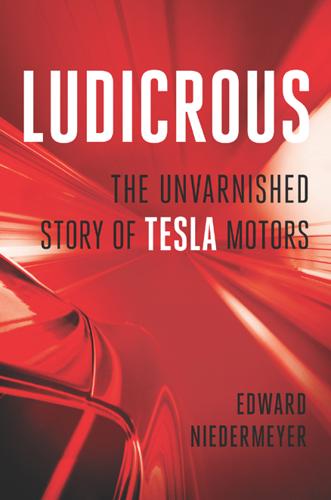
Ludicrous: The Unvarnished Story of Tesla Motors
by
Edward Niedermeyer
Published 14 Sep 2019
At the same time, its future is being disrupted by a fresh crop of innovators who are leaving the entire idea of the car behind. CHAPTER 16 LUDICROUS MODE The most you could say is that Solyndra executives were too optimistic. They presented a better face to the situation than should have been presented in the final few months, but then, if they didn’t do that, it would have become a self-fulfilling prophecy of—as soon as a CEO says ‘I’m not sure if we’ll survive,’ you’re dead. You know, I think people are making too much of this Solyndra thing. Elon Musk, September 29, 2011 The crowd went nuts as Elon Musk emerged from a giant silver semitruck, walked to the center of the stage, and spread his arms in greeting.
…
Forbes, March 12, 2012. https://www.forbes.com/sites/calebmelby/2012/03/12/how-elon-musk-became-a-billionaire-twice-over/ 90he was named Fortune’s businessman of the year: Marylin Adamo and Colleen Leahey. “2013’s Top People in Business.” Fortune, November 21, 2013. http://fortune.com/2013/11/21/2013s-top-people-in-business/ 90the upside could have exceeded a billion dollars: Scott Woolley. “Tesla Is Worse Than Solyndra.” Slate, May 29, 2013. https://slate.com/business/2013/05/tesla-is-worse-than-solyndra-how-the-u-s-government-bungled-its-investment-in-the-car-company-and-cost-taxpayers-at-least-1-billion.html 90In an end-of-quarter announcement: Tesla. “Tesla Mode S Sales Exceed Target.” US Securities and Exchange Commission, March 31, 2013. https://www.sec.gov/Archives/edgar/data/1318605/000119312513135229/d514482dex991.htm Chapter 8 93even a drive-in restaurant: Fred Lambert.
…
Within days of announcing its Q1 profit, Tesla sold more than $1 billion worth of stock and convertible bonds and used the proceeds to pay off the DOE loan completely. Suddenly Tesla’s entire image was transformed from a money-losing ward of the state to a profitable, independent automaker that Americans could be proud of. After the painful bailouts of GM and Chrysler and the failure of other DOE loan recipients like Solyndra, Tesla seemed like a fresh, new beginning for American automotive ambitions. With media and political sentiment behind it, Musk told Tesla’s PR staff that he wanted the company to make one announcement per week. In the following months, Tesla announced an asterisk-laden lease plan that could make a Model S cost just $500 per month, the goal of making its charging stations “zombie apocalypse–proof,” a battery-swap system that would automatically recharge a Model S in less time than it took to pump a tank of gas, an “Autopilot” system that would be able to drive itself in 90 percent of road conditions in just three years, and a claim that the Model S had earned the “best safety rating of any car ever tested” from the National Highway Traffic Safety Administration (prompting a statement from the regulator warning it not to overstate its ratings).
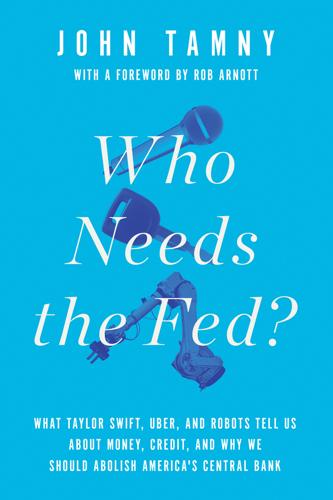
Who Needs the Fed?: What Taylor Swift, Uber, and Robots Tell Us About Money, Credit, and Why We Should Abolish America's Central Bank
by
John Tamny
Published 30 Apr 2016
While the talent differential between politicians and successful investors is blindingly obvious, to point it out is arguably to miss the greater point. Undoubtedly, those who properly decry government in its role as venture capitalist can point to the massive government loan to now bankrupt Solyndra as one of many modern examples of how politicians don’t know how to invest. Yet political apologists can also point to busts such as Webvan, Globe.com, and eToys (to name but three) as evidence that for-profit investors are fully capable of funding Solyndra-like debacles. Yet that is the point. The quote by George Gilder that begins this chapter explains why. Gilder’s words are loaded with essential knowledge about how an economy grows.
…
Readers should compare this scenario to that of the government, no matter the ideology of the politicians allocating the money. When politicians spend or invest, they do not labor under the same market-driven discipline that private investors do. As the failure rate in Silicon Valley reveals, private investors are quite fallible, and yes, they are all-toocapable of funding egregious Solyndra equivalents. The major difference is that when Globe.com falters, investors quickly starve it of capital so that it can destroy no more. When politicians spend, they have an unlimited source of funds—you, me, Michael Dell, and Larry Ellison—to tap. They can continue to support that which doesn’t work.
…
W., 156 Phillips curve, 156 Pipes, Sally, 53 political class, 51–52, 58–59 Ponnuru, Ramesh, 138–39 Popular Economics (Tamny), 3, 4, 48–49, 67, 81, 142, 143 price cutting, 73 private air transportation, 85–86, 98 private-sector investment, 78 production and money supply, 136 property development, 33, 35–37 quantitative easing (QE) program, 149–54, 172 RadioShack, 57 Rasmussen, Bill, 109 Reagan, Ronald, 49–50, 68–69, 71, 72, 171, 172 recessions, 142, 147, 153 recruiting of college athletes, 15–21 Reds (film), 23 Reid, Harry, 51 Reynolds International, 54 The Rise and Fall of Monetarism (Smith), 121 Rivals recruit rankings, 15–18, 19–20 the Roaring Twenties, 94–95 robots and job creation, 176–80 Rock, Arthur, 31 Romney, Mitt, 126 Roosevelt, Franklin D., 61, 142, 167–69 Rothbard, Murray, 89, 92 Rubio, Marco, 59 The Russians (Smith), 77 Ryan, Paul, 51, 150 Saban, Nick, 79, 129 Sampler, Jeffrey, 105 Sam’s Club, 105, 106–7 San Francisco 49ers, 17 Sarbanes-Oxley regulations, 119, 124 Sarkisian, Steve, 16, 20 saving money, 57–58, 77, 88, 112, 149, 176 Say’s Law, 94–95 Schlumberger, 73 Schumpeter, Joseph, 28, 123 Secrets of the Temple (Greider), 121 Securities and Exchange Commission (SEC), 38 Security Pacific Bank, 34–35, 101, 108, 129, 164–65 The Seven Fat Years (Bartley), 70, 157–58 Shampoo (film), 23 Shandling, Garry, 24 Shanghai, 138 Sharma, Ruchir, 151 She’s Gotta Have It (film), 109 Shlaes, Amity, 167–69 Shula, Mike, 79, 129 Shultz, George, 170 Silicon Valley, 27–32, 143 Smith, Adam, 65, 67, 77, 119, 140, 142–43 Smith, David, 121 Smith, Hedrick, 77 Smith, Robert H., 34–37, 108, 111, 129, 162, 164–65, 173 Smoot-Hawley Tariff, 142 Snow, John, 118 Solyndra, 59, 60 Soviet Union, 76–78, 80, 94 Splash (film), 22–23 Stanford University, 16–17 stimulus spending, 53, 141 student debt, 173–74 substitution effect and traditional banking alternatives, 105, 106–7 supply-side economics, 48–55, 79–80, 92–94, 141, 144 surge pricing, 12–14, 106–7, 165–66 Swanson, Bret, 143 Swift, Taylor, 9–12, 13, 162–63 Switzer, Barry, 18–19 tariffs, 3 taxes as barrier to economic growth and prosperity, 3 and Laffer curves, 50, 54–55 Smoot-Hawley Tariff, 142 and supply-side economics, 49–51, 79–80, 92–93, 141 technology innovation in Austin, Texas, 123–25 robots and job creation, 176–80 Ten Days That Shook the World (Reed), 23 Tennessee Valley Authority (TVA), Texas Instruments, 155 The Theory of Money and Credit (von Mises), 87 Thiel, Peter, 28–29, 59, 150, 168 This Time Is Different (Reinhart and Rogoff), 168 Thwaites, Thomas, 64–65 Timiraos, Nick, 147, 148 toasters, 64–65 Town & Country (film), 23–24, 28 Townsend, Robert, 109 Trammel, Joel, 123–25 Troubled Asset Relief Program (TARP), 172–73 Truffaut, François, 24 Trump, Donald, 33–37 The 21st Century Case for Gold (Gilder), 68 The Twilight of Sovereignty (Wriston), 109 2008 financial crisis, 106, 110 Uber and “easy credit,” 115–16 and the “sharing economy,” 57 and surge pricing, 12–14, 106–7, 165–66 Ueberroth, Peter, 34–35 unicorn companies, 28, 148 University of Michigan, 16–17, 18, 19, 20, 21, 79, 103, 127, 148 University of Southern California (USC), 18–20 University of Washington, 20 USAA, 108 U.S.
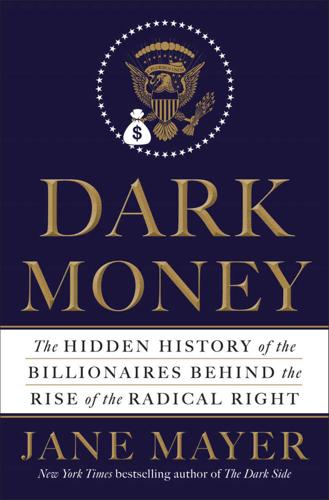
Dark Money: The Hidden History of the Billionaires Behind the Rise of the Radical Right
by
Jane Mayer
Published 19 Jan 2016
Two months into their tenure, Republicans on the House Energy and Commerce Committee also led a crusade against alternative, renewable energy programs. They successfully branded the government’s stimulus support for Solyndra, a California manufacturer of solar panels, and other clean energy firms an Obama scandal. In fact, the loan guarantee program in the Energy Department that extended the controversial financing to the company began under the Bush administration. Contrary to the partisan hype, it actually returned a profit to taxpayers. Moreover, while Solyndra’s investors were portrayed as Obama supporters, among its biggest backers were members of the conservative Walton family, the founders of Walmart.
…
Unsure what else to do, in late 2011 the Koch operatives made one of the first attack ads of the general election season. Sponsored by Americans for Prosperity, it slammed Obama as corruptly showering his friends with “green giveaways” such as Solyndra. AFP spent $2.4 million running the ad thousands of times in the key states of Florida, Michigan, Nevada, and Virginia. Sean Noble had sold the idea as a clean shot. But it caused a little problem. One of the Koch donors turned out to have invested in Solyndra and was not happy. A subsequent Koch-created ad, aired by the American Future Fund, also proved problematic. The mysterious Iowa-based front group was a favorite choice for messages from which the Koch camp preferred to distance itself.
…
“a wish list”: Leslie Kaufman, “Republicans Seek Big Cuts in Environmental Rules,” New York Times, July 27, 2011. “rips the heart out”: “A GOP Assault on Environmental Regulations,” Los Angeles Times, Oct. 10, 2011. Contrary to the partisan hype: Solyndra went bankrupt, as did several other firms supported by the huge government loan guarantee program, but as National Public Radio reported, despite $780 million in losses from defaults on loans, the program made $810 million in interest, yielding a $30 million profit. Jeff Brady, “After Solyndra Loss, U.S. Energy Loan Program Turning a Profit,” NPR, Nov. 13, 2014. A huge investor: Dixon Doll’s firm, DCM, invested in Abound Solar. “like night and day”: Hamburger, Hennessey, and Banerjee, “Koch Brothers Now at Heart of GOP Power.”
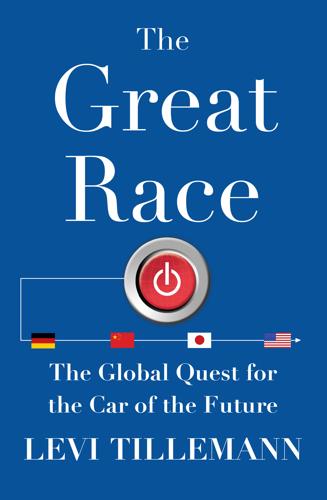
The Great Race: The Global Quest for the Car of the Future
by
Levi Tillemann
Published 20 Jan 2015
In 2009, the Wall Street Journal reported that “venture-capital firms are hiring law firms and attending seminars to help their start-ups snare a slice of the stimulus pie.” The industry had decided to “embrace . . . bureaucratic Washington.”20 Some of these companies turned into lightning rods for political controversy—and fodder for those who were critical of government’s new role in the economy. Solyndra became the archetype for a VC-backed company of dubious worth that worked through Washington to secure massive amounts of government funding. When it went bust, its $535 million government-backed loan went underwater. A firestorm of controversy and allegations of political impropriety ensued. Another typical case is that of the VC firm Kleiner, Perkins, Caufield & Byers (KPCB).
…
Beyond the Kafkaesque quality of his monologue, Eastwood’s appearance underscored a serious point: if Obama was reelected, it really was halftime for both Detroit and a potentially transformative raft of Obama administration energy policies. If, however, Obama lost, then it was game over—at least for the next four years. Obama’s green transportation and energy agenda would be treated like a bad joke by the Republican Party. There were two clear roads ahead. Despite the battle scars from Solyndra, Fisker, A123, and others, Obama still placed a great emphasis on the importance of the clean energy sector, and certainly EVs. “[T]here are few breakthroughs as promising for increasing fuel efficiency and reducing our dependence on oil as electric vehicles,” he told a crowd of college students during the run-up to the 2012 election.
…
On the other hand, if Romney won the presidency, there was little doubt that he would seek to withdraw government support for EV innovation and deployment. Romney embraced the Republican narrative of a bankrupt clean-tech sector. He even called Tesla a “loser”—lumping it together with the failed solar company Solyndra and a struggling, soon to be defunct, Fisker. The businessman candidate was rooting, very publicly, against one of America’s most innovative and promising companies. So for EV enthusiasts all over the world, Mitt Romney’s wistful late-night admission on November 6 that his wife, Ann, “would have been a wonderful first lady” came as an intense relief.

The Fifth Risk
by
Michael Lewis
Published 1 Oct 2018
Other countries are outspending us in R&D, and we are going to pay a price.” Politically, the loan program had been nothing but downside. No one had paid any attention to its successes, and its one failure—Solyndra—had allowed the right-wing friends of Big Oil to bang on relentlessly about government waste and fraud and stupidity. A single bad loan had turned a valuable program into a political liability. As he dug into the portfolio, MacWilliams feared it might contain other Solyndras. It didn’t, but what he did find still disturbed him. The DOE had built a loan portfolio that, as MacWilliams put it, “JPMorgan would have been happy to own.” The whole point was to take big risks the market would not take, and they were making money!
…
Because of that lack of communication, nothing is being done. All policy questions remain unanswered.” The DOE has a program to provide low-interest loans to companies to encourage risky corporate innovation in alternative energy and energy efficiency. The program became infamous when one of its borrowers, the solar energy company Solyndra, was unable to repay its loan, but, as a whole, since its inception in 2009, the program has turned a profit. And it has been demonstrably effective: it lent money to Tesla to build its factory in Fremont, California, when the private sector would not, for instance. Every Tesla you see on the road came from a facility financed by the DOE.
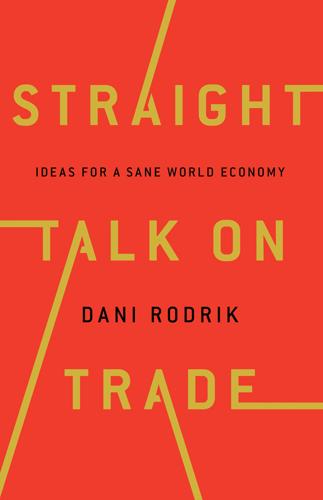
Straight Talk on Trade: Ideas for a Sane World Economy
by
Dani Rodrik
Published 8 Oct 2017
As Harvard Business School professor Josh Lerner mentions, some of the most dynamic technology companies in the United States, including Apple and Intel, received financial support from the government before going public.9 The electric car maker Tesla was a beneficiary of the same public loan guarantee program as Solyndra, the solar cell company that went bust in a public and spectacular manner. As the last example illustrates, many public initiatives fail. However, the ultimate test is whether the social return on the portfolio as a whole is positive, taking successes together with the flops. Such broad evaluations tend to be rare.
…
The first is that governments do not have the information needed to make the right choices as to which firms or industries to support. The second is that once governments are in the business of supporting this or that industry, they invite rent seeking and political manipulation by well-connected firms and lobbyists. In the United States, the case of Solyndra—a solar cell manufacturer that folded after having received more than half a billion in loan guarantees from the US government—provides a recent illustration where both failures were apparently in play. In reality, the first of these arguments—about lack of omniscience—is largely irrelevant, while the second—about political influence—can be overcome with appropriate institutional design.
…
In reality, the first of these arguments—about lack of omniscience—is largely irrelevant, while the second—about political influence—can be overcome with appropriate institutional design. Good industrial policy does not rely on government’s omniscience or ability to pick winners. Failures are an inevitable and necessary part of a well-designed industrial policy program. While it is too early to pass a firm judgment on the US loan guarantee program, it is clear that the Solyndra case cannot be properly evaluated without taking into account the many successes the program has spawned. Tesla Motors, which received a $465 million loan guarantee in 2009, has seen its shares soar and is now a model company. An early evaluation of US Department of Energy programs in energy efficiency in 2001 found the net benefits amounted to $30 billion—an excellent return for an investment of roughly $7 billion over twenty-two years (in 1999 dollars).13 Interestingly, much of the positive impact was due to three relatively modest projects in the building sector.

Power Play: Tesla, Elon Musk, and the Bet of the Century
by
Tim Higgins
Published 2 Aug 2021
During the first debate between the two men, Romney went on the attack for Obama’s support of Tesla, Fisker, and Solyndra. “I had a friend who said, ‘You don’t just pick winners and losers; you pick the losers,’ ” Romney said. Solyndra was an especially juicy target. The solar panel darling, also located in Fremont, had received $535 million in loan guarantees under the Obama administration. But as a glut of Chinese-made solar panels flooded the market and a reduction in subsidies in Europe cut demand, Solyndra had found itself in trouble, filing for bankruptcy almost a year earlier. Fisker appeared to be struggling as well.
…
But neither side wanted to go it alone. Timing, however, was finally on Musk’s side. As GM and Chrysler struggled, the Obama administration was putting pressure on the DOE loan office to begin announcing projects—even if the deals weren’t yet ready for final approval. So the office announced that a Silicon Valley solar company called Solyndra would get money—followed shortly after with news that Tesla would get a loan, too. Daimler followed suit. In May they announced a $50 million investment, giving the company a 10 percent stake in Tesla. As it happened, the DOE announcement reflected not a true deal but a highly contingent term sheet, Suissa said.
…
Despite Musk’s putting on his best public face, it was obvious that Tesla was in trouble. The company found itself spoken of in the same breath as foundering companies, and Musk was having to deflect, telling reporters that Tesla had more money than it needed to complete the Model S. “The most you could say is that Solyndra executives were too optimistic,” he told reporters at the Press Club in Washington, D.C., subtly and unintentionally showing his own cards. “They presented a better face to the situation than should have been presented in the final few months, but then, if they didn’t do that, it would have become a self-fulfilling prophecy of—as soon as a CEO says I’m not sure if we’ll survive, you’re dead.”

Servant Economy: Where America's Elite Is Sending the Middle Class
by
Jeff Faux
Published 16 May 2012
The ideological constraints on industrial policy meant that Obama’s modest efforts to support the country’s position in the global race to market new energy technologies had to be made under the cover of the short-term stimulus to create jobs. To serve the immediate goal, the money had to be shoveled out quickly in loans to help already existing companies to expand. Thus, Obama’s Energy Department made a large loan to the Solyndra Corporation, a solar panel manufacturer, despite warnings from the bureaucracy that the company was in trouble. Solyndra’s presumed market advantage was that it could successfully compete because it used less high-priced silicon than its rivals. When the price of silicon fell—partly because of the global recession—the company went under. Obama and his energy secretary, Steven Chu, defended the loan on the grounds that in order to spur technological growth, the government had to take risks that the private sector would not take.
…
Schwarzenegger, Arnold Securities and Exchange Commission servant economy effect on economy free trade policy and job creation military and need for personal services and New Deal protections and standard of living and two-tiered work force and value-added intermediaries wages and Shadow Elite (Wedel) Sherman Anti-Trust Act Shiller, Robert Shilling, A. Gary sick pay silver market (1979–1980) Simpson, Alan Slaughter, Anne-Marie Sleek Audio “smart bombs,” Smoot-Hawley Act social issues, ideology and social mobility social programs Great Society Medicare New Deal and (See also New Deal) Reagan and Social Security Social Security Solyndra Corporation South Korea Soviet Union Sperling, Gene stagflation Standard & Poor’s Starobin, Paul states domestic spending and state pensions “state’s rights,” See also individual state names Steiner, Christopher Stevens, Ann Huff Stewart, Jon Stiglitz, Joseph stock market. See financial sector; Great Depression; Great Recession; subprime mortgage bubble (2000–2008) “structural deficit,” subprime mortgage bubble (2000–2008) deregulation and Fannie Mae and Freddie Mac George W.
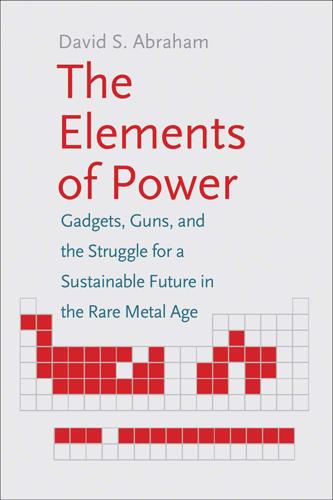
The Elements of Power: Gadgets, Guns, and the Struggle for a Sustainable Future in the Rare Metal Age
by
David S. Abraham
Published 27 Oct 2015
As the American geologist Josiah Spurr said in 1920, “Our own vast mineral wealth is so abundant that not till recently has American capital and enterprise found it necessary to adventure into the outside world, as European nations have done long ago.” Spurr, Political and Commercial Geology and the World’s Mineral Resources (New York: McGraw-Hill, 1920), vi. 34. Joe Stephens and Carol D. Leonnig, “Solyndra: Politics Infused Obama Energy Programs,” Washington Post, December 14, 2010, www.washingtonpost.com/solyndra-politics-infused-obama-energy-programs/2011/12/14/gIQA4HllHP_story.html. 35. Jeff Phillips, telephone interview by David Abraham, November 8, 2013. 36. In 1994, ninety commodities were stockpiled. Fifteen years later, in 2009, there were twenty-four because the United States had sold off its supplies.
…
It wasn’t until the early part of the past century that Americans began to acquire resources from abroad.33 The United States still has a self-sufficiency tendency as well as relative abundance compared to other countries, but it has a stubborn faith in the free market. The market allocates resources and capital; the government is not supposed to pick winners. This is why, in 2011, when Solyndra, a solar panel manufacturer, went bankrupt, even after receiving federal government subsidies, President Obama faced a backlash from the conservative wing of Congress.34 A stark choice challenges U.S. politicians—have resource self-sufficiency or a free market. Without government intervention, investment dollars will flow to the mineral deposit with the greatest potential for production.
…
See also names of individual elements Raytheon, 171 Reagan, Ronald, 30, 239n30 Reck, Barbara, 188, 189, 190, 191, 192 Recycling, 177, 184–92, 224, 285n34 Reeck, David, 141 REEs (rare earth elements), xi, 5, 61 Refining, steps in, 69–72 Reisman, Lisa, 110, 111 Renewable energy, 135, 136–37 Research, need for, 220–23 Reshoring, 212 Resource constraints, 205–8 Resource needs, x, 12 Resource security, 28–32, 203–5, 208–12, 228 Rhenium, 113, 114, 128–30, 132, 256n42 Rhodia (Solvay, metal processing firm), 70 Richard Hammen, 70 Richardson, Ed, 165–66 Rive, Lyndon, 148 Romans (ancient), 158 Roosevelt, Franklin Delano, 30, 238n28 Royal Philips Sonicare, 115 Rule of law, 200–201 Sagawa, Masato, 20–22, 25–28, 205, 229 Samarium, 20, 121 Samarium-cobalt magnets, 20, 22, 189–90 Santini, 235n2 Saudi Arabia, control of oil prices, 40 Savagian, Pete, 142, 143 ScanWind, 139 Schlumberger, 86 Screens: flat-screen technology, 122–24 LCD screens, 264n33 touch screens, 1, 261n19 Seafood, 208–9 “Sea of Death” (Dokai Bay, Japan), pollution in, 181 Search engine use, in China, 199 Secondary sources, rare metals recovery from, 79–80 Second China Rare Earth Summit, 194 Secrecy, xi–xii, 67, 68, 70, 87, 147, 160, 161, 196, 197, 268n17 Securing Materials for Emerging Technologies (American Physical Society & Material Research Society), 208, 211, 212–13 Selenium, 79, 149, 150, 190, 246n40 Semiconductors, 165 Senkaku Islands (Diaoyu Islands), territorial dispute over, 22–24 Senter, William, 156 Sesa-Opas (pseud., Indonesian social media user), 126, 127 Shanghai International Securities, 252–53n17 Shape memory, 221 Sheffi, Yossi, 112–13, 172 Sichuan Province, China, opposition to mining in, 49 Siemens, 139 Sillamäe, Estonia, refining in, 67–69 Silmet (Factory Number 7), 67–69, 72–76, 80–82 Silver, xiii, 4, 187, 190 Silver, Michael, 35, 139–40, 218 Simbol Materials, 211 Sinclair, Clive, 118, 119 Skyscrapers, molybdenum in, 162 Smartphones, 121, 216, 218, 260n15 Smith, John, 131–32 “Smoke Capital” (Osaka, Japan), pollution in, 181 Smuggling, 98, 203. See also Illegal mining and trading Social media, mining company investments via, 51 Solar panels, 148–50, 152 Solid-state drives, 122 Solvent extraction, 70 Solyndra (solar panel manufacturer), 209 Sonneborn, Jon, 145–46 South Korea: CBMM ownership in, 42 steel demand in, 11 South Portland, Maine, landfill mining in, 224 Soviet Union, cobalt purchases by, 18–19, 234–35n2 Spurr, Josiah, 291n33 Sputtering (manufacturing process), 185 Spy planes, 155–57, 158–59 Stainless steel, 74, 155–56 Stalin, Joseph, 67, 68 Standard of living, 10–11 Start-stop batteries, 147–48 State Council (China), 198 Statistics on rare metals industry, lack of reliable, xii.
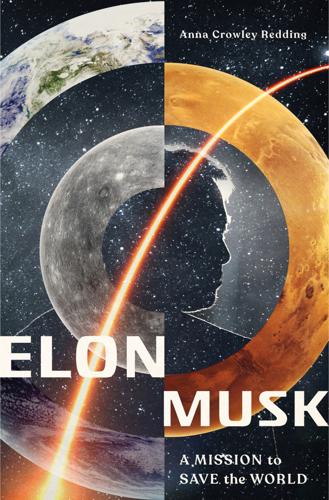
Elon Musk: A Mission to Save the World
by
Anna Crowley Redding
Published 1 Jul 2019
Well, in a charged exchange, Romney brought up Obama’s green energy loans. Tesla wasn’t the only company who received one. So did a handful of other green energy companies, some of which had gone bankrupt. Romney spouted at Obama, “But don’t forget, you put $90 billion, like fifty years’ worth of breaks, into—into solar and wind, to Solyndra and Fisker and Tesla and Ener1. I mean, I had a friend who said you don’t just pick the winners and losers, you pick the losers, all right? So this—this is not—this is not the kind of policy you want to have if you want to get America energy secure.”126 So at a moment when the world was watching, Tesla was branded a loser.
…
Slate, 21 May 2015. slate.com/articles/business/moneybox/2015/05/elon_musk_biography_review_how_did_a_sci_fi_nut_with_a_hero_complex_becoming.html. _____. “Romney Decides That Thriving Electric-Car Start-up Tesla Is a ‘Loser.’” Slate, 4 Oct. 2012, slate.com/technology/2012/10/mitt-romney-calls-tesla-loser-like-solyndra-in-presidential-debate.html. Paine, Chris, dir. Do You Trust This Computer? Papercut Films, 5 April 2018. doyoutrustthiscomputer.org/watch. Paris Productions. “EV1 Funeral,” part 1, Hollywood, CA, July 24, 2003. Posted by EV1Forever. YouTube video, 8:00. youtu.be/HZHka8KUj74. Pelley, Scott. “SpaceX: Entrepreneur’s Race to Space.”
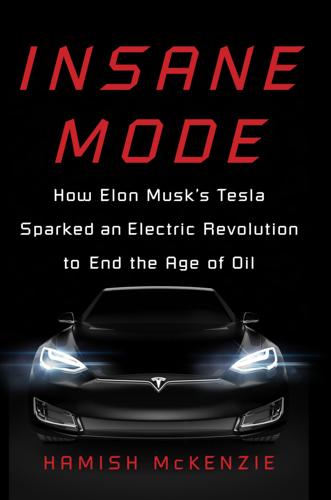
Insane Mode: How Elon Musk's Tesla Sparked an Electric Revolution to End the Age of Oil
by
Hamish McKenzie
Published 30 Sep 2017
In a Koch Industries advertorial published in a special edition of US politics newspaper The Hill in April 2016, the company wrote that fossil fuels and electric vehicles can and should coexist “on a level playing field.” The language in the advertorial closely mirrored the language in James Mahoney’s opinion piece that was published on Fortune’s website. Both articles called out the Department of Energy (DOE) loans program that benefited Tesla as well as solar panels manufacturer Solyndra, which went bankrupt in 2011 and became a favorite political punching bag. In his 2016 testimony to a House of Representatives subcommittee on energy, Nicolas Loris decried the market “distortion” of the government’s involvement in such deals as the DOE loans. Loris worked for the Heritage Foundation, which had received funding from the Charles G.
…
Loris worked for the Heritage Foundation, which had received funding from the Charles G. Koch Charitable Foundation, where Loris previously worked as an associate. In November 2014, the DOE announced that the renewable-energy loans program was profitable and later revealed it would net $6 billion once all loans had been repaid. The loss on Solyndra, which amounted to $528 million, made up the bulk of the portfolio’s losses. Congressmen who have received campaign donations from the Kochs have also proven willing to apply pressure to Tesla specifically. South Dakota Republican senator John Thune, who in 2016 was chairman of the Senate Committee on Commerce, Science, and Transportation, called on Tesla to explain to the committee its response to the Autopilot fatality.
…
See autonomous vehicles Self-Driving Coalition for Safer Streets, 269 shale, oil from, 216 Shapiro, Danny, 110 Shen, Tiger, 145–147 Shenzhen (China), development of, 128–130 Shirley, Craig, 229 Sierra Club, 46 Silicon Valley Apple and, 105–106, 111–113 entrepreneurial mindset in, 105–111 Fremont development and, 79, 108–109 Singer, Fred, 212 Singulato Motors, 145–147, 267 Sinotel Technologies, 92 smart electric vehicles (SEV), 134, 136–137 Smart microcar (Daimler), 77–79 Snapchat, 141 Snyder, Rick, 49 software, importance to cars, 263–264 SolarCity Buffett’s dispute with, 209 innovation of, 6 products of, 8–9 Tesla acquisition of, 249 solar energy. See also SolarCity Powerpacks and Powerwalls, 195–197 solar shingles, 253 Superchargers and solar canopies, 56 Solyndra, 230 Sommer, Joerg, 243 Soon, Willie, 212 SpaceX capital for inception of, 24 Dragon spacecraft, 85 early financial issues, 76 future of, 251 innovation of, 6, 17 International Space Station contract of, 76 Musk on moral mission of, 32–33 Tesla engineering space at, 121 Sperling, Dan, 104 Spiegel, Evan, 141 Spiegel, Mark, 228 Sproule, Simon, 155–157 steam-powered cars, 29 Stone, Peter, 213 StopElonFromFailingAgain.com, 229 Straubel, JB on battery costs, 172–174 on car software, 264 Gigafactory and, 203 Musk and, 27 Tesla inception and, 63–66 Tesla’s financial investors and, 77, 78 Tesla’s influence on automobile industry and, 178–181 Strickland, Bill, 243 Strickland, David, 269 Stross, Randall, 34 Summey, Brad, 227 Sunac, 242 Suning, 236 Superchargers China network of, 151 Tesla’s plans for, 184 U.S. network of, 12, 55–59 worldwide network for, 166 Super League, 241 supertanker analogy, 176 Suskewicz, Josh, 55 Tarpenning, Mark, 65–66, 69 Tata Motors, 250 TechCrunch, on Faraday Future, 87–93, 96–97 TechCrunch Disrupt conference, 178–181 Tencent, 98, 111, 127–128, 140–141, 143, 236 TerraE, 200 Tesla, Nikola, 66 Tesla Motors, 63–82.
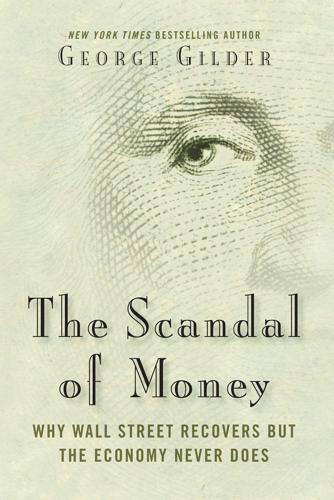
The Scandal of Money
by
George Gilder
Published 23 Feb 2016
Is the ultimate symbol of our predicament not a bailout for middle-class mortgages but a backup of imaginary money for mythical beasts? In the new world of zero interest rates and quantitative ease, money migrates not to opportunity but to bureaucracy, not to creativity but to clout and cozenage, not to new 3-D semiconductors but to sleek Solyndras. Without real interest rates, funds flow to influence and precedence. Confined below the Fed’s ceiling, venture capitalists are left to play circle games with unicorns. Only large companies can master the demands of the game, the need for foreign exchange hedges, transnational holding companies, legal specialists, complex securitizations, intellectual property swaps, private equity inversions, multiple stock classes, alternative energy entanglements, audit committees, double cross-checking accountant teams, diversity mandates, sexual harassment backside protectors, and other pettifoggery all crowding out the entrepreneurs.
…
See also stagnation seigniorage, 12, 34, 67, 80 Shanghai, 30, 42–43, 48 Shannon, Claude, 64, 133, 138–40, 143, 168, 173–74 Shell, 158–59 Shelton, Judy, 162–63 Shelton bonds, 163 Silicon Valley, xvii, xxii, 18, 50, 70, 87, 115, 117–20, 122–25, 127–29, 149, 164, 169, 171 Singapore, 106 Skousen, Mark, xv, 32–33 Smith, Adam, xx socialism, socialists, xviii, 5, 20, 25, 31, 150, 152–53 Social Security, 15, 55 Solyndra, 123 Sony, 158 Soros, George, 89, 96–97, 110 South China Sea, 40 Southwest Airlines, 9 Soviet Union, 42, 156. See also Union of Soviet Socialist Republics (USSR) Spain, 55, 57, 94, 117 Spratly Islands, 40 stagnation, xiii–xv, 31, 84, 87, 91, 96, 117, 129, 134, 149, 152, 162, 164. See also secular stagnation Stiglitz, Joseph, 89 stimulus, xiii, xviii, 14, 150, 171 Stockman, David, 40, 48, 50 Stone Age, 19, 169 Summers, Lawrence “Larry,” 3, 7, 56, 114, 134, 150 Sun Microsystems, 119 Swanson’s Law, 18 Sweden, Swedes, 5, 36 Szabo, Nick, 64, 72–76, 160 T Taiwan, Taiwanese, 30, 46–48, 106 Tamny, John, 11 tax cuts, xiv, 12, 151, 153 Taylor, John, 35 Taylor Rule, 35 technology, xi, xviii–xix, xxi–xxii, 2–3, 5–9, 12–13, 19, 41, 43, 45, 56–58, 63–67, 70, 83, 90, 92, 100, 143, 158, 171 Tel Aviv, 118 Texas, 55, 99 Thailand, 110 Thiel, Peter, xi, 14, 56 third world, the, 6, 118, 152 Tiananmen Square, 29, 43 Troubled Asset Relief Program, 55 Trump, Donald, 40, 113 Turing, Alan, 64, 138, 168, 174 Turing machine, 138 Turner, Adair, 88–96, 110 Turner-Piketty thesis, 93, 96 Tversky, Amos, xx Twilight of Sovereignty (Wriston), 101 U UBS, 127 unemployment rates, xi–xiii, 35, 55, 100, 150, 152 Unenumerated, 73 “unicorns,” 50, 87, 119–23, 171 Union of Soviet Socialist Republics (USSR), 42.
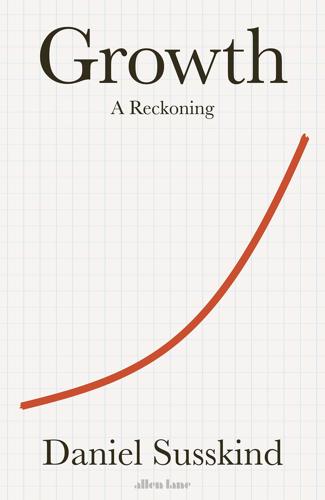
Growth: A Reckoning
by
Daniel Susskind
Published 16 Apr 2024
To begin with, those on the political Right are likely to reel at the idea of the state intervening in this way, and would dismiss the idea of deliberately stepping in to shape what technologies get developed as heavy-handed and hubristic. This sort of task, it is said, is far too complex to compute and far too fraught with error to implement. The Obama administration’s decision to back the solar company Solyndra – ‘the future is here’, the President declared when visiting their Californian factory – less than two years before it collapsed into bankruptcy (and was raided by the FBI) is the flagship modern failure.17 Instead, those on the Right would say that the best way to determine our technological direction of travel is through the free market: allow unfettered prices to set the incentives that people face, and leave people’s profit-seeking hustle in response to those incentives to shape which particular technologies get built.
…
, The New York Times, 30 April 2020. 14 www.ox.ac.uk/news/2020-11-23-oxford-university-breakthrough-global-covid-19-vaccine; Carolyn Johnson, ‘Pfizer’s Coronavirus Vaccine is More than 90 Per Cent Effective in First Analysis, Company Reports’, The Washington Post, 9 November 2020. 15 Jon Cohen, ‘“Absolutely Remarkable”: No One Who Got Moderna’s Vaccine in Trial Developed Severe COVID-19’, Science, 30 November 2020. 16 David Autor and Elisabeth B. Reynolds, ‘The Nature of Work After the COVID Crisis: Too Few Low-Wage Jobs’, Brookings (2020); www2.deloitte.com/mt/en/pages/about-deloitte/press-releases/mt-pr2020-010-global-automation-intelligence-survey.html. 17 Richard Adams, ‘Solyndra: A Bad Bet for the White House’, The Guardian, 15 September 2011. 18 See, for instance, John Upper, ‘Hayek on Socialist Calculation’, 1997, calculemus.org/hayek/hayek-lange.htm. 19 Daniel Heil, ‘What Goes Wrong When Government Interferes with Prices’, Hoover Institution Research, 12 January 2021, www.hoover.org/research/what-goes-wrong-when-government-interferes-prices. 20 Tim Jackson, Prosperity Without Growth (Oxford: Routledge, 2017), p. 222. 21 ‘Often neglected in recent accounts of economic thought, early precursors of modern growth theory were actually devised in the 1920s in the context of Soviet debates’, Matthias Schmelzer, The Hegemony of Growth (Cambridge: Cambridge University Press, 2016). 22 See Francis Spufford, Red Plenty (London: Faber and Faber, 2010).
…
Kung San people, 11–13 Kallis, Giorgos, 154, 163 Kant, Immanuel, 23 Kantorovich, Leonid, 219–20 Kennan, George, 72 Kennedy, John F., 59, 68, 69, 78, 90 Kennedy, Robert F., 132 Keynes, John Maynard, 3, 14, 19, 60, 87, 142, 253, 260; Economic Possibilities for Our Grandchildren, 79–80, 101; How to Pay for the War, 55–6, 64–5, 297n42 Keynesian economics, 64–5 Keyserling, Leon, 78 Khanin, Grigorii, 69 Khrushchev, Nikita, 68, 220 King, Gregory, 61 King, Mervyn, 142 Klein, Ezra, 320n58 Koyama, Mark, 249 Krugman, Paul, 14, 25, 115, 116, 177, 211–12 Kuznets, Simon, 62–6, 132–3, 141, 293n6, 296n40, 297n41 Large Hadron Collider, 197 Layard, Richard, 86–7, 303n40 Le Guin, Ursula K., xvi Lee, Richard, 11–13, 279n19, 279n22 Lepenies, Philipp, 298n46 Lessig, Larry, 184, 185, 186 Lewis, Arthur, 29 life expectancy, sharp increase after 1800, 8–11 light, price of, 84–5, 129–30 ‘Logic Theorist’ (computer program), 199 ‘long-termism’, 258–62 Lucas, Robert, 24, 25, 35–7, 102, 204, 223–4 MacAskill, William, 194–5, 258–61 Maddison, Angus, 7 Malthus, Thomas, 13–22, 25–6, 40, 281n35 Manabe, Syukuro, 306n10 Manhattan Project, 281n40 Marienthal, Austria, 118 Marjolin, Robert, 59 market fundamentalism, 216–17 Marshall, Alfred, 193 Marshall Plan, 71–2 Marx, Karl: dislike of Malthus, 13, 19, 25; dismisses idea of ‘stationary state’, 165; on forces of production, 50; horror at factory conditions, 270; on inequality, 87; on the merits of growth, 219; as moral scientist, 146; and Rostow, 27; on technological progress, 110; on William Petty, 61 McNeill, John Robert, 220 Meadows, Donna, 149 Merkel, Angela, 75 Messi, Lionel, 114 Microsoft, R&D (Research & Development), 188 Milanovic, Branko, 116, 163 Mill, John Stuart, 25, 146, 167–8, 284n7 Millikan, Max, 71 ‘mini-publics’, 264–8 Mises, Ludwig von, 216 Mishan, Ezra, The Costs of Economic Growth (1967), 154 Moderna (company), 200 Mokyr, Joel, 47, 50–2, 209, 210, 308n39 Moon Jae-in (South Korean president), 266 Moore, Gordon, 195 Moore’s Law, 195–6 Morris, William, 152 Moser, Petra, 191 Mouffe, Chantal, 304n49 Musk, Elon, 258 Nagel, Thomas, 166, 320n54 Napoleonic Wars, 21 national accounting, 60–3, 66 Neumann, John von, 191 Newton, Isaac, 41, 46, 196 Nietzsche, Friedrich, 138, 274 Nixon, Richard, 59, 295n20 Nordhaus, William, 57, 62, 129–30 North American Free Trade Agreement (NAFTA), 256 North Douglass, 45, 46 Obama, Barack, 216, 236–7, 257, 269 Okun, Arthur, Equality and Efficiency (1975), 229–30, 231–2 OpenAI (company), 189, 244 oral hydration therapy, 38 Ord, Toby, 259 Organisation for Economic Co-operation and Development (OECD), 204, 265 Organisation for Economic Development, 59 Orwell, George, 68, 328n3 Pareto, Vilfredo, 91, 232 ‘Pareto efficiency’, 232–4 Parfit, Derek, xvii, 165, 221 Parrique, Timothée, 154 patents, 179, 181 Pearson, Karl, 42 Peccei, Dr Aurelio, 153, 317n15 Pepys, Samuel, 61 Petty, William, 61 Pinker, Steven, 79 Plato, ‘Noble Lie’, 116 pluralism, 145–6 politics, and economic growth, 110–14 Posner, Richard, 180 poverty, decline of, 79–80 price mechanism, 217–18 prostitution, and GDP, 134–5 Proudhon, Pierre-Joseph, 284n9 public-private investment, 189–190, 190 R&D (Research & Development), investment in, 186–90 Radishchev, Alexander, 62 randomized control trial (RCT), 44, 290n54 Rawarth, Kate, 160, 254, 312n28 referenda, popular, 263 remote-work technologies, 213–14 renewable energy, 235–41 Ricardo, David, 14, 21, 25, 114, 283n7 Ridley, Matt, 14 Rini, Regina, 260 Robbins, Lionel, 231–2 Robinson, James, 47 ‘robot tax’, 243 Rockoff, Hugh, 298n46 Rodrik, Dani, 116 Rogoff, Kenneth, 93 Romer, Paul, 35–42, 45, 52, 156, 157–9, 203, 209, 210, 289n46 Roosevelt, Franklin D., 63, 64, 67 Roser, Max, 80 Rosling, Hans, 84 Rostow, Walt, 27–8, 58 Rubin, Jared, 249 Ruskin, John, 152, 270 Russell, Bertrand, 199 Sachs, Jeffrey, 46 Samuelson, Paul, 21, 57, 58, 69–70, 114, 153 Sandel, Michael, 138, 147, 252, 263, 265, 293n4 Schlesinger, Arthur, 296n35 Schmelzer, Matthias, 154, 163, 300n67 Schumpeter, Joseph, 152 Scientific Revolution, 50–1 Scruton, Roger, 273 Second World War, and national economy, 64–7 Sen, Amartya, 145, 146 Senior, Nassau, 19–20 Shannon Diversity Index, 144 Shelley, Percy Bysshe, 13–14 Skidesley, Robert and Edward, 293n4 Smil, Vaclav, 237 Smith, Adam, 25, 146, 178, 282n44, 283n7, 311n13 Smith, Noah, 150 socialism, and economic growth, 220–1 Socrates, 322n15 solar energy, 235–6 Solow, Robert, 31, 35–6, 40, 52, 93, 157, 223, 317n25 Solow-Swan model, 31–4, 157, 287n31 Solyndra (solar company), 216 South Korea: citizen assemblies, 266; economic transformation, 245–7 Soviet Union, and the Cold War, 67–70 Sowell, Thomas, 229 Spufford, Francis, 220 Steinsson, Jón, 164 Stern, Nicholas, 235 Stern Review (on climate change), 235 Stevenson, Betsey, 88 Stiglitz, Joseph, 123, 145 Stone, Richard, 66, 71 Strayer, Joseph, 71 Suetonius, 178 Summers, Larry, 93, 156, 175 surveillance, of employees, 108 Susskind, Daniel, The Future of the Professions, 199 Susskind, Jamie, 112, 268, 305n52 Swan, Trevor, 31, 157 Swartz, Aaron, 184, 185–6 Syrquin, Moshe, 298n46 technological progress: and diminishing returns, 33–4; and innovation, 199–202; and threats to employment, 106–10 Thatcher, Margaret, 263 Thiel, Peter, 75 Thomas, Robert, 45 Thunberg, Greta, 149–50, 155–6 Tobin, James, 59, 89 trademarks, 179, 181 Truman, Harry S., 79 Trump, Donald, 190, 263 Turner, Adair, 293n4 Ulam, Stanislaw, 114 unemployment: and economic growth, 75–9; and technological change, 106–10 Union of Soviet Socialist Republics (USSR) see Soviet Union United Nations (UN): adopts GDP measure, 72; Climate Action Summit (2019), 149; Millenium Goals, 81; pledge for full employment, 77; System of National Accounts, 127, 140 United States of America (USA): and the Cold War, 67–9; and economic growth, 59; economy in the Second World War, 64–5, 67; Employment Bill (1945), 77, 78; Great Depression, 62–3, 75–7; labour market, 256–7; patent and trademark protection, 181–2 universities, administrative bloat, 198 Vauban, Sébastien Le Prestre de, 62 Vitruvius, 178 Volcker disinflation, 162 Vollrath, Dietrich, Fully Grown, 175 Vries, Jan de, 277n2, 277n3, 291n62 Vries, Peer, 292n72 wage inequality, 104 war, and national economies, 60–7 wealth inequality, 105 Weber, Max, 46, 291n62 Weitzman, Martin, 257 welfare economics, 146 Whitehead, Alfred North, 51, 199 Wilde, Oscar, 268 Wiles, Peter, 69, 221 Winner, Langdon, 267 Wittgenstein, Ludwig, 207 Wolfers, Justin, 88 Wordsworth, William, 13 World Bank, 30, 66, 80, 115 World Trade Organization (WTO), 256 Limits of Growth (Club of Rome report, 1972), 153, 222 Yale University, 198 Yudkowsky, Eliezer, 126 Zuckerberg, Mark, 114 THIS IS JUST THE BEGINNING Find us online and join the conversation TWITTER / X twitter.com/penguinukbooks FACEBOOK facebook.com/penguinbooks INSTAGRAM instagram.com/penguinukbooks YOUTUBE youtube.com/penguinbooks PINTEREST pinterest.com/penguinukbooks LINKEDIN linkedin.com/company/penguin-random-house-uk TIKTOK tiktok.com/@penguinukbooks For the latest books, recommendations, author interviews and more Sign up to the Penguin Newsletter Find out more about the author and discover your next read at Penguin.co.uk PENGUIN BOOKS UK | USA | Canada | Ireland | Australia New Zealand | India | South Africa Penguin Books is part of the Penguin Random House group of companies whose addresses can be found at global.penguinrandomhouse.com.
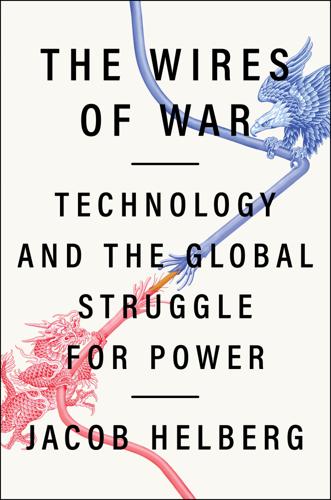
The Wires of War: Technology and the Global Struggle for Power
by
Jacob Helberg
Published 11 Oct 2021
Lost Out on iPhone Work.” 21 Henry Farrell and Abraham L. Newman, “Weaponized Interdependence: How Global Economic Networks Shape State Coercion,” MIT Press Direct, July 1, 2019, https://www.mitpressjournals.org/doi/full/10.1162/isec_a_00351. 22 Joe Stephens and Carol D. Leonnig, “Solyndra Scandal,” Washington Post, December 25, 2011, https://www.washingtonpost.com/politics/specialreports/solyndra-scandal/. 23 Jared Bernstein, “The Time for America to Embrace Industrial Policy Has Arrived,” Foreign Policy, July 22, 2020, https://foreignpolicy.com/2020/07/22/industrial-policy-jobs-climate-change/. 24 “Assessing and Strengthening the Manufacturing and Defense Industrial Base and Supply Chain Resiliency of the United States.” 25 “S. 2826—Global Economic Security Strategy of 2019,” Congress, November 7, 2019, https://www.congress.gov/bill/116th-congress/senate-bill/2826. 26 “S. 3933—CHIPS for America Act,” Congress, June 10, 2020, https://www.congress.gov/bill/116th-congress/senate-bill/3933?
…
If the United States is to secure its supply chains and information networks against Chinese attacks, we need to reindustrialize America. The notion of implementing a concerted “industrial policy” has long been considered off-limits. Republicans tended to deride the approach as “picking winners and losers.” Democrats, in turn, have been mindful that a high-profile failure—like the collapse of California solar company Solyndra, which received a Department of Energy loan guarantee22—would be used to discredit government intervention more broadly. Now, however, it’s become clear that the United States’ slow drift toward deindustrialization is not a threat to Democrats or a threat to Republicans—it’s a threat to the country.
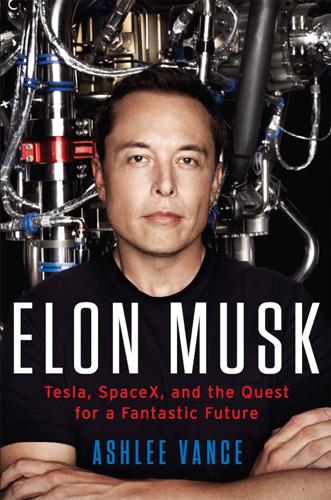
Elon Musk: Tesla, SpaceX, and the Quest for a Fantastic Future
by
Ashlee Vance
Published 18 May 2015
The naysayers expected numerous Model S flaws to crop up and undermine the enthusiasm for the car, to the point that people started canceling their orders in bulk. There were also huge doubts that Tesla could ramp up production in a meaningful way and do so profitably. In October 2012, the presidential hopeful Mitt Romney dubbed Tesla “a loser,” while slagging off a couple of other government-backed green technology companies (the solar panel maker Solyndra and Fisker) during a debate with Barack Obama.14 While the doubters placed huge wagers on Tesla’s impending failure, Musk’s bluster mode engaged. He began talking about Tesla’s goals to become the most profitable major automobile maker in the world, with better margins than BMW. Then, in September 2012, he unveiled something that shocked both Tesla critics and proponents alike.
…
In 2012, SolarCity went public and its shares soared higher in the months that followed. By 2014, SolarCity was valued at close to $7 billion. During the entire period of SolarCity’s growth, Silicon Valley had dumped huge amounts of money into green technology companies with mostly disastrous results. There were the automotive flubs like Fisker and Better Place, and Solyndra, the solar cell maker that conservatives loved to hold up as a cautionary tale of government spending and cronyism run amok. Some of the most famous venture capitalists in history, like John Doerr and Vinod Khosla, were ripped apart by the local and national press for their failed green investments.
…
“People should not expect this to be active sooner than five years,” he said. “But we see it as a long-term revenue source for SpaceX to be able to fund a city on Mars.” Meanwhile, SolarCity has purchased a new research and development facility near the Tesla factory in Silicon Valley that’s intended to aid its manufacturing work. The building it acquired was the old Solyndra manufacturing plant—another symbol of Musk’s ability to thrive in the green technology industry that has destroyed so many other entrepreneurs. And Tesla continues to build its Gigafactory in Nevada at pace, while its network of charging stations has saved upward of four million gallons of gas. During a quarterly earnings announcement, J.
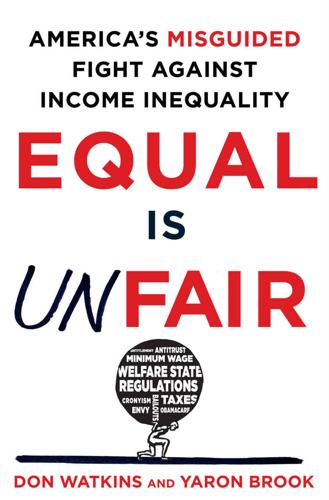
Equal Is Unfair: America's Misguided Fight Against Income Inequality
by
Don Watkins
and
Yaron Brook
Published 28 Mar 2016
An example of this form of privilege, for instance, is found in the rise of the Fanjul Family, which built its sugarcane empire through special low-interest loans from the government, and protectionist tariffs that allow the Fanjuls and other U.S. sugar growers to charge twice the world price for sugar, at an annual cost to Americans of $1.9 billion.10 Agriculture in general receives enormous support from the government, amounting to more than $20 billion a year in direct subsidies alone.11 But agriculture is just one area in which the government undermines freedom by handing out taxpayer cash. Carmaker Tesla started its electric car business with a $465 million loan from the Energy Department.12 “Green energy” company Solyndra famously received $535 million from the Energy Department before going bankrupt. Meanwhile, under the leadership of CEO Jeffrey Immelt, General Electric has made government favors the centerpiece of its business strategy. Author Hunter Lewis describes GE as having a “close and indeed symbiotic relationship with government in finance, defense, green energy, television, technology, and export” and notes it is a “primary beneficiary of the [Obama] administration’s stimulus bill.”13 It’s important to be clear about what does and doesn’t count as cronyism.
…
Hector, 10–11 Samphân, Khieu, 207 Sánchez, Yoani, 51–3 Sandefur, Timothy, 127–8 Say, Jean-Baptiste, 91 Scandinavian countries, 27, 107, 111–13 Schadenfreude (taking pleasure in other people’s misfortunes), 214 Schoeck, Helmut, 216 Sherk, James, 128 Short, Philip, 208–9 Sidney, Algernon, 100, 241n26 Silicon Valley, 130–2, 134, 194 Simon, Kosali I., 45–6 Singer, Peter, 201, 205 Smith, Adam, 160 Smith, Hedrick, 32, 181–2 Smith International, 158 social justice, 185–90 Social Security, 31, 35, 41, 69–70, 127, 138, 170, 181–3, 225 Solyndra, 150 Soviet Union, 51–2, 108 Sowell, Thomas, 29–30, 119 stagflation, 32 stagnation, 32, 38–48 standard of living, 39–41, 43, 45, 64, 84–5 and collectivism, 182, 216 and egalitarianism, 201 and finance, 155 and inequality, 175 and innovation, 102 and life expectancy, 24 and productivity, 95 and progress, 24, 26–8 and regulation, 126 and retirement, 181 and unions, 128 and the welfare state, 141 Stiglitz, Joseph, 4, 6, 8, 20, 38, 81, 117 Summers, Lawrence, 166 Sunstein, Cass, 183–4 tall poppy syndrome, 213–18 Tanner, Michael, 142 taxes and taxation and health care, 135–6 and income data, 44–5 in the inequality narrative, 20, 23, 27, 30–3 inheritance taxes, 79, 165–9 and mobility, 120–1 policy, 6–7, 20, 120, 138, 142–4 and poverty, 126–7, 143–4 and Scandinavian countries, 112–13 and stagnation, 44–7 and wealth, 169–73, 212 Temkin, Larry, 194, 206 Tesla, 150 Tesla, Nikola, 89 Thiel, Peter, 60, 130 Thompson, Don, 124 “too big to fail,” 157 Tooley, James, 133 trickle-down economics, 95 Uber, 101–2, 107, 155 Ubl, Stephen, 136 unions.

AI Superpowers: China, Silicon Valley, and the New World Order
by
Kai-Fu Lee
Published 14 Sep 2018
After the 2008 financial crisis, President Obama’s stimulus program included plans for government loan guarantees on promising renewable energy projects. It was a program designed to stimulate a stagnant economy but also to facilitate a broader economic and environmental shift toward green energy. One of the recipients of those loan guarantees was Solyndra, a California solar panel company that initially looked promising but then went bankrupt in 2011. President Obama’s critics quickly turned that failure into one of the most potent political bludgeons of the 2012 presidential election. They hammered the president with millions of dollars in attack ads, criticizing the “wasteful” spending as a symptom of “crony capitalism” and “venture socialism.”
…
See China and U.S., competition between China’s technology environment compared to, 15–16, 43–45, 49, 55, 57, 65, 71–73 China’s version of, 51–53, 63 Chinese copycat entrepreneurs and, 22–25, 28, 30–34, 49 chip development in, 96–97 data gathered by, 56 eBay and, 35–36 ecosystem of, 52–53 elite expertise in, 82, 83 entrepreneurs of, 15–16, 22, 26, 27, 52, 168 failure in China, 39–40 four waves of AI and, 106 global markets and, 137, 138 lean startup methodology and, 44–45 policy suggestions coming from, 201 resistance to product modifications, 24, 38, 39 resistance to subsidies, 76 ride sharing and, 68 universal basic income and, 207, 208–10, 218 world technology market domination, 2, 11–12 Silicon Valley (TV series), 55 Simon, Herbert, 7 Singapore, 20, 137, 146 T the singularity, 140–41, 142 Sinovation Ventures Guo’s attraction of, 52, 62 Lee’s founding of, 52, 57, 64, 67 startups incubated by, 57, 58 study by, 89 Smart Finance, 112–13, 163 smartphones China’s alternate internet universe and, 54, 61 Chinese leapfrogging of PCs with, 57–58 Chinese students and, 3, 83 chips in, 96 mini-iPhones, 32 Mobikes and, 78 mobile payments and, 74, 75 processing power in, 9 WeChat app for, 58–59, 61, 70 Zhongguancun and, 52 social entrepreneurship, 216–17 social investment stipend, 220–24 Softbank, 153 Sohoo (search engine), 31 solar panels, photovoltaic, 133 Solyndra, 100 Southeast Asia, 137, 169 South Korea, 146, 159, 228–29 Soviet Union, 3 Space Race, 3 SpaceX, 49 speech recognition advances in, recent, 161 Baidu and, 93 deep learning and, 5, 10 educational applications, 123 iFlyTek and, 104–5 international competitions in, 87, 104–5 Lee and, 177–78 legal applications, 115 in the mainstream, 143 Microsoft Research and, 81 neural networks and, 8–9, 10 privacy and, 124 speech synthesis, 104–5, 177 Sphinx, 8 Sputnik, 3 Sputnik Moment for China (2016), 3, 11 Steal Vegetables, 43 steam engine, 149, 150, 152, 154, 228 Stoppelman, Jeremy, 72 strawberry picking, 129 strong features vs. weak features, 110–11, 113, 191 structured data, 111–12 Summers, Lawrence, 151 super-app model, 70–71.

What If We Get It Right?: Visions of Climate Futures
by
Ayana Elizabeth Johnson
Published 17 Sep 2024
Jigar: When I first entered the office, we had about $44 billion of loan authority that we still hadn’t used. Ayana: Why wasn’t it being used? People couldn’t figure out what to fund, or was the program not fully running? Jigar: I mean, we are the office that was made famous by Solyndra. Ayana: Ah, that’s right. Solyndra was the failed solar startup that caused huge drama during the Obama administration when they couldn’t pay back a loan. Jigar: Oh, yeah. I think that took up two pages in Obama’s memoir. So, the office was dormant. Then current DOE Secretary Granholm during her confirmation hearing said she and President Biden aimed to revive it.
…
(interview), 38–47 scope 3 emissions, 161–62 Scully Effect, 213 seagrass, 25, 314 sea level rise, 11, 19, 21 impacts of, 20, 141n, 225, 344 local planning for, 321 relocation and, 374, 375 See also coastal ecosystems and communities seaweeds, 401, 402, 409–10, 411 See also ocean farming seed patenting, 413 Seeger, Pete, 86 Shah, Jigar, 172, 180–81 interview, 181–96 Shelley, Mary, 22 shellfish, 401, 402 oysters and oyster reefs, 93n, 97, 303, 401, 409 See also ocean farming Sherrod, Baba Charles, 78–79 Sherrod, Shirley, 78–79 shipping, 303, 315, 319 Siddiqa, Ayisha, 31, 150, 238–39 interview, 239–55 Sierra Club, 145, 324 small water cycle, 41–42 Smith, Bren, 306–7, 308, 400–401 interview, 401–19 SNAP funding and reform, 83 snow and snowpack, 18, 19, 39, 209n See also precipitation soil, 25 soil carbon and carbon sequestration, 25, 40, 57, 67, 81 soil health, 40, 42, 66–67, 68, 80–81 soil temperatures, 41 solar energy: China’s solar industry, 277, 278 financing, 180, 181, 182, 183 growth and capacity increases, 27, 28, 139, 172, 180, 190 local regulatory obstacles, 195 solar panel technologies and materials, 89, 181 storage technologies, 186 See also clean energy development solar panels, 27 Solnit, Rebecca, 398 solutions, 3, 5, 15 climate solutions in the media, 211–13, 220, 221, 225–28 individual vs. systemic, 226–27, 231 nature-inspired vs. technological, 25–26, 40–41, 46, 134–35 See also action and advocacy; nature-inspired solutions; possibility; specific problem/solution contexts solutions journalism, 225 Solyndra, 182 Song, Lisa, 236 Soul Fire Farm, 68, 72–73, 74, 80–81 See also Penniman, Leah space exploration and colonization, 14, 17 Spackman, Neal, 44–45 spread the word, 5 Standard Oil, 263n Standing Rock protests, 244 Stănescu, Oana, Climate Oath, 421–22 Stanley, Vincent, 167 state climate and environmental policy, 261, 300, 331–32 Stillwell, Marquise, 312 Stivers, Cyndi, 104 Stop the Money Pipeline Coalition, 145 storms, 19–20, 96, 304, 347 See also disasters; flooding; hurricanes strikes, 82, 242, 243 the Global Climate Strike, 238, 239–43 subsidies, 164 Suleyman, Mustafa (interview), 119–35 SunEdison, 180 Sunrise Movement, 142, 149, 291 supermarkets, 155–56 Superstorm Sandy, 96, 304 Supplemental Nutrition Assistance Program (SNAP), 83 Supreme Court.
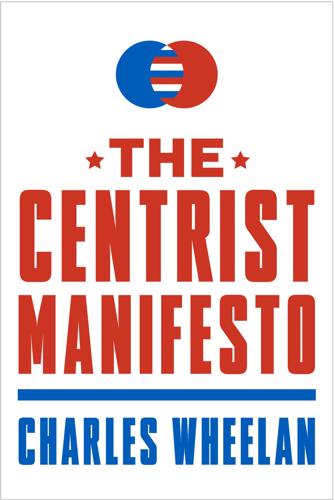
The Centrist Manifesto
by
Charles Wheelan
Published 18 Apr 2013
The Booth School of Business at the University of Chicago polled an ideologically diverse group of prominent economists about their views on a carbon tax; 96 percent of the economists polled answered either “agree” or “strongly agree” that a twenty-dollar-per-ton tax on carbon emissions would be better for the U.S. economy than an income tax increase that raised the same amount of revenue ($150 billion annually).27 Why do economists, including conservatives such as Mankiw, advocate for putting a price on carbon? Because raising the cost of carbon-based fuels by a modest amount would encourage conservation and promote cleaner alternatives without the government having to offer expensive subsidies (e.g., ethanol) or to pick technological winners (e.g., Solyndra, the California-based manufacturer of solar panels that received large federal subsidies before going bankrupt). Think about it: If we tax income, people work less. If we tax carbon, they pollute less. You don’t have to win the Nobel Prize in economics to understand that logic (though to reiterate, those who have won the Nobel Prize are particularly likely to feel this way).

Boom: Bubbles and the End of Stagnation
by
Byrne Hobart
and
Tobias Huber
Published 29 Oct 2024
Think of SpaceX and its fight against Department of Defense procurement policies that systematically favor well-connected aerospace and defense incumbents, or ARPA–Energy’s attempts to pick a winner in so-called cleantech by subsidizing a select few startups (including the solar panel manufacturer Solyndra, which imploded spectacularly in 2011 after the cleantech bubble burst). It’s no wonder, then, that a nostalgic hopelessness, defeatist fatalism, or outright nihilism about the future has started to metastasize. On a deeper level, the absence of transcendental vision that characterizes our age has resulted in a general “future blindness,” in which the future has simply become the continuation of a never-ending present defined by uniformity, homogeneity, and a general lack of dynamism.
…
In it, Doerr describes climate change as “the largest economic opportunity of the 21st century, and a moral imperative.” 283 This simultaneous belief in profits and salvation fueled the cleantech bubble, which burst just a year after Doerr’s speech, when the financial crisis simultaneously led to a collapse in oil prices and a dramatic reduction in investors’ appetite for high-risk projects. The subsequent high-profile problems at companies like Solyndra further intensified investor skepticism of clean energy, at least in the US. While cleantech represented a new and massive market—an opportunity Doerr characterized as “bigger than the internet”—its rise cannot be fully understood without an appeal to its narrative of salvation. As the behavioral economist Robert Shiller notes, an emotionally resonant narrative can act as a contagion. 284 Doerr, for example, began his talk by describing a conversation he had with his daughter about how climate change will impact her generation.
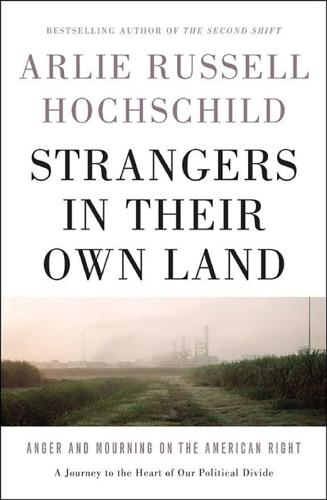
Strangers in Their Own Land: Anger and Mourning on the American Right
by
Arlie Russell Hochschild
Published 5 Sep 2016
In 2013, 1.9 percent of American workers were civilian federal employees, and that percentage has declined over the last ten years. For more, see Appendix C.) Many government workers waste taxpayer money doing useless work, she feels. Here Fox News offered her a rich supply of “can’t top this” examples. First, there was Solyndra, a solar company that wasted a $535 million federal loan. Then an EPA worker was caught watching four hours of pornography films on a government computer, one called Sadism Is Beautiful. Then there was the National Endowment of the Arts–funded painting in which the artist Chris Ofili attached cow dung to the figure of the Virgin Mary.
…
Maybe you can make a picture of Christ out of cow manure if you want to. You can make one of Mohammed out of cow manure if you want to. Or you can make one of Buddha out of manure if you want to. But don’t let my tax dollars pay you the money to do it. You go out there and shovel that manure on your own.” To Janice, the “other team” was behind the failed Solyndra, the EPA’s Sadism Is Beautiful man, the manure artist. Not her team. No way. Faces in Line It is not just the moral laxity of the Democrats that galls Janice, but the imposition of such laxity on her. She is badgered for sympathy, she feels, and made to feel bad if she doesn’t grant it. Take sexual orientation and gender identity.
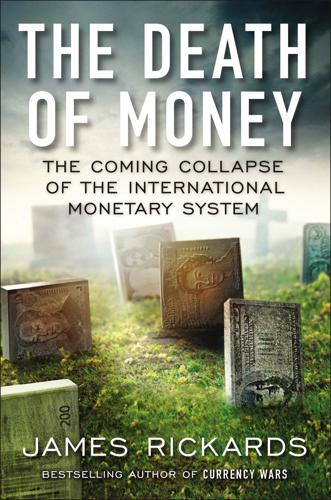
The Death of Money: The Coming Collapse of the International Monetary System
by
James Rickards
Published 7 Apr 2014
The Gotthard Base Tunnel will be linked to scores of high-speed rail corridors coordinated by the EU’s Trans-European high-speed rail network, called TEN-R. These and many similar European infrastructure projects compare favorably in terms of long-term payoffs with Chinese ghost cities and the U.S. practice of wasted investments such as solar cell maker Solyndra and electric car maker Fisker, which both filed for bankruptcy. The German labor-management coordination model for large enterprises, called Mitbestimmung, or codetermination, has been in place since the end of the Second World War. It was expanded significantly in 1976 with the requirement that worker delegates hold board seats of any corporation with more than five hundred employees.
…
Belen, 183 Schmidt, Helmut, 271–72 Schumann, Robert, 116 Schwartz, Anna, 84 Schwarzman, Stephen A., 51–52 Scotland, 136 Second Bank of the United States, 199 self-organized criticality, 270 Serbia, 136 Seven Years War, 115 shadow finance system, in China, 101–4 shadow gold standard, 236 Shafik, Nemat, 194–95 Shakespeare, William, 67, 88 Shamoon digital virus, 60 Shanghai Cooperation Organization (SCO), 150–52 Shapiro, Mary, 59 Shinohara, Naoyuki, 194–95 sight accounts, in gold, 276 signal amplification, 22 in stock trading, 23 terrorist insider trading and, 24, 25, 26, 27 Skype, 144 small-and-medium-sized (SME) lending, 79–80 Smith, Adam, 70, 71, 72, 87, 218, 255 Snowden, Edward, 39, 54, 149 social disorder, 294–95 solidus, 114 Solyndra, 123 Sony, 82 Sorkin, Andrew Ross, 51 Sorman, Guy, 132 Soros, George, 45, 292 sou, 114 sound-dollar policy, 118, 176–77, 210, 211 South Africa, 139, 235. See also BRICS (Brazil, Russia, India, China, South Africa) South Korea, 45 sovereign debt crisis of 2010, European, 128–30 Soviet Union, 69.

Wealth and Poverty: A New Edition for the Twenty-First Century
by
George Gilder
Published 30 Apr 1981
To vivisect it for redistribution is to kill it. As President Mitterand’s French technocrats discovered in the 1980s, and President Obama’s quixotic American ecocrats are discovering today, government managers of complex systems of wealth soon find they are administering an industrial corpse, a socialized Solyndra. Whatever the state of inequality of incomes, it is dwarfed by the inequality of contributions to human advancement. Robert Heinlein wrote, “Throughout history, poverty is the normal condition of man. Advances that permit this norm to be exceeded—here and there, now and then—are the work of an extremely small minority, frequently despised, often condemned and almost always opposed by all right thinking people.
…
Rockefeller, Nelson Romero Barcelo, Carlos Roth, William Rouse, James rule-and-consent systems Ryan, Paul S Said, Edward Salomon, Richard San Diego (California) Sarbanes-Oxley Saudi Arabia The Savage Mind (Claude Levi-Strauss) savings, decline of desire for insurance and Keynes and rates wealth and See also Investment savings accounts Sawyer, John Say, Jean-Baptiste Say’s Law Schlafly, Phyllis Schmidt, Eric Schuettinger, Robert Schultz, Howard Schumpeter, Joseph Schwarzenegger, Arnold scientific breakthroughs s-curves of growth Seattle (Washington) secondary sector jobs security segregation bilingual education and Seldon Technologies semiconductors Senate Budget Committee Senate Finance Committee services, productivity of sexuality and poverty sexual liberation Sexual Suicide (George Gilder) Shackle, George Shamir, Yithzak Shockley, William shopping centers Sierra Club silicon chip Silicon Valley Singapore sinks of purchasing power Sismondi, Simonde de Siuai “Skinner box,” Smith, Adam Smoot-Hawley Tariff Act socialism attitude toward businessmen critique of capitalism demise of hostility to spirit of giving priority of demand under See also Communism social security sociology sociology of despair Software Garden Solomon Islands Solow, Robert Solyndra Solzhenitsyn, Aleksandr South civil rights movement and Southwest Airlines Soviet Union Sowell, Thomas space program Spain speculation Spitzer, Elliott Sprague, Peter Sprague Electric company Starbucks Star Wars (film) state college and university system statistical distributions, illusions of statistics of crisis Steiger, William Steiger Amendment Stein, Herbert Steyn, Mark Stockman, David stock market The Studio (John Gregory Dunne) subsidies suffrage, limitations on The Suicide of a Superpower (Patrick Buchanan) sumps of wealth supply curves supply-side economics Susu Sutton, Percy Sweden Switzerland T Taiwan take-home pay Tanamoshi Tanous, Peter Tanzi, Vito targeted approach to promoting investment tariffs tax brake theory taxes and taxation bureaucracy and cuts in deficit spending and destructive effect of government and high level of, in US.
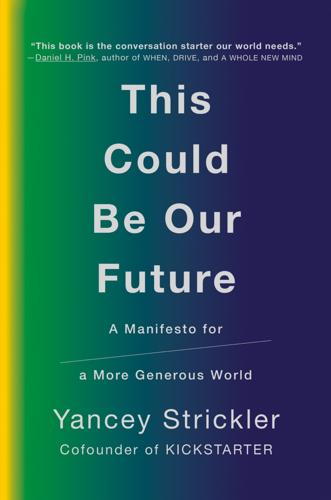
This Could Be Our Future: A Manifesto for a More Generous World
by
Yancey Strickler
Published 29 Oct 2019
Mazzucato makes a convincing argument that we should think of government funding as investment rather than spending. If we viewed the returns on these funds like a business would, we would think very differently about public funding, and be happy with what we found. Some notable failed government investments—Concorde in the UK and Solyndra in the United States—are often brought up to say that government should stay out of the private sector. But those losses are peanuts compared to the successes, and of course private investors aren’t considered failures if they make a bad bet. Government investments are held to an impossible standard in a bid to maintain the status quo.
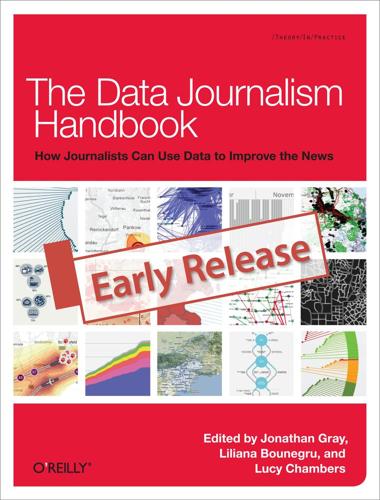
The Data Journalism Handbook
by
Jonathan Gray
,
Lucy Chambers
and
Liliana Bounegru
Published 9 May 2012
— Tom Fries, Bertelsmann Foundation An Answer to Data-Driven PR The availability of measurement tools and their decreasing prices—in a self-sustaining combination with a focus on performance and efficiency in all aspects of society—have led decision-makers to quantify the progresses of their policies, monitor trends, and identify opportunities. Companies keep coming up with new metrics showing how well they perform. Politicians love to brag about reductions in unemployment numbers and increases in GDP. The lack of journalistic insight in the Enron, Worldcom, Madoff, or Solyndra affairs is proof of many a journalist’s inability to clearly see through numbers. Figures are more likely to be taken at face value than other facts, as they carry an aura of seriousness even when they are entirely fabricated. Fluency with data will help journalists sharpen their critical sense when faced with numbers and will hopefully help them gain back some terrain in their exchanges with PR departments
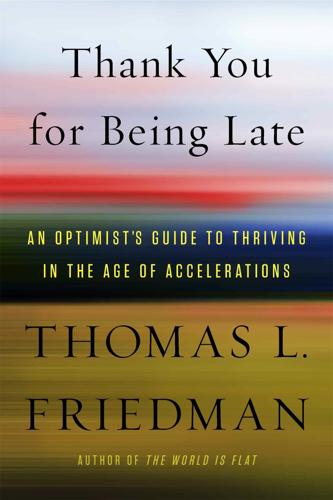
Thank You for Being Late: An Optimist's Guide to Thriving in the Age of Accelerations
by
Thomas L. Friedman
Published 22 Nov 2016
Can anyone imagine any senator or representative saying to any president from another party regarding any issue today: “Too bad your idea didn’t work. I know you meant well for the country. What should we try next?” In 2011, U.S. taxpayers had to write off $535 million in federal guarantees, extended by the Obama administration, to a solar-panel venture start-up, Solyndra, whose technology also failed to deliver. This led to years of Republican recriminations, investigations, and allegations. We should not just shrug off the loss of $535 million, but venture investing isn’t called “venture” for nothing; some projects are going to fail. The larger point is that in Washington, D.C.
…
.; Armed Services Committee of Senegal sensors; in consumer electronics; in dairy farming; definition of; locomotives and September 11, 2001, terrorist attacks Serious Man, A (film) Serra Cafema Camp, Namibia Sevareid, Eric sexism Shankar, Sadasivan Sharef, Eleonora sharing economy, trust and Sharon, Ariel Shehata, Zyad Shimizu, Diana Showtime Silver Shirts Sims, Zach Singapore Singh, Prabhjot Sirosh, Joseph skill sets: basic; college degrees and; intelligent assistance and; intelligent assistants and; social; workforce and Skype Slack (messaging app) Sleiman, Ghada Smart Cities project smart machines smartphones Smith, Lee “SMOP” problems social capital, trust as social media; constructive vs. destructive aspects; flow of information on; see also specific platforms social safety net, portability of Social Security social skills social technologies; in age of accelerations; global flows and; innovation in; technological change and; trust and software; APIs and; function of; networking and; open-source, see open-source software software innovation: big data and; collaboration and; computer memory and; integrated circuits and; Microsoft and; Moore’s law and solar energy Solidarity movement Soloway, Jill Solyndra Somalis: in Minnesota; as pirates Somé, Batamaka “Someone Like You” (song) Sony SourceForge South Africa South Carolina South China Sea Southeast Asia South Korea South Vietnam Soviet Union; collapse of space race Spano, Jake Spengler, Oswald spoofing spread spectrum stability, stasis vs.
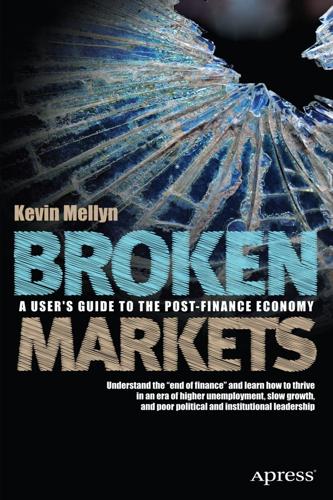
Broken Markets: A User's Guide to the Post-Finance Economy
by
Kevin Mellyn
Published 18 Jun 2012
Major US corporations—never great defenders of the free market—jumped on board the government gravy train, as did well-connected venture capitalists. The bailed-out auto manufacturers, especially General Motors, also had their investment priorities directed to electric cars despite questions about market demand. The Chevy Volt and Solyndra are but two of the poster children of this adventure in central planning, industrial policy, and crony capitalism pursued with the best of intentions. The Point: Power Which brings us to the point of why financial repression and industrial policy are two sides of the same coin. The point is power.
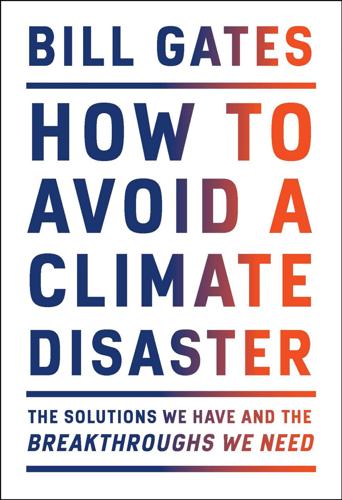
How to Avoid a Climate Disaster: The Solutions We Have and the Breakthroughs We Need
by
Bill Gates
Published 16 Feb 2021
And although quintupling an R&D budget sounds like a lot of money, it pales in comparison to the size of the challenge—and it’s a powerful indicator of just how seriously a government takes the problem. Make bigger bets on high-risk, high-reward R&D projects. It’s not just a question of how much governments spend. What they spend it on matters too. Governments have been burned by investing in clean energy before (look up “Solyndra scandal” if you need a reminder), and policy makers understandably don’t want to look as if they are wasting taxpayers’ money. But this fear of failure makes R&D portfolios shortsighted. They tend to skew toward safer investments that could and should be funded by the private sector. The real value of government leadership in R&D is that it can take chances on bold ideas that might fail or might not pay off right away.
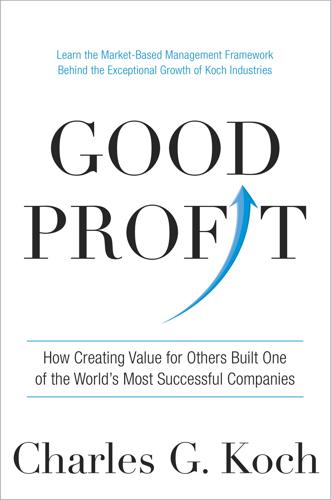
Good Profit: How Creating Value for Others Built One of the World's Most Successful Companies
by
Charles de Ganahl Koch
Published 14 Sep 2015
This is why the world went from mainframe computers to laptops and tablets: not because of some government subsidy or mandate, but because consumers showed they valued the latter more than the former. If the market signaled that consumers value energy from solar panels more than energy from oil and gas, the solar energy industry wouldn’t need to pursue profit by political means as Solyndra did, in seeking subsidies from energy consumers and taxpayers. The solar power industry, like every business, should strive to profit by economic means instead of coercive ones. At Koch, we stress the importance of incessantly embracing innovation and replacing old products, services, and methods with newer and better ones, such as Georgia-Pacific’s touchless hand towel and soap dispensers.

The Code: Silicon Valley and the Remaking of America
by
Margaret O'Mara
Published 8 Jul 2019
Most significantly of all, hydraulic fracking—which involved the high-velocity injection of millions of gallons of liquid into bedrock to release the natural gas within—vastly increased domestic energy production and drove down prices, taking away the market incentives to use alternative fuels. On top of this came the cable-news-stoked political scandal of Solyndra, a solar energy company that collapsed after receiving $500 million in federal subsidies. (As staggering as the sum appeared, it was small potatoes in the world of green energy. Elon Musk’s various ventures together received close to $5 billion in government subsidies by 2015.) Under fire, the Obama Administration scaled back their ambitions for a green-tech future, and Kleiner did as well.19 Doerr and Gore had made a gamble that fell far short of its promise, even though in another, less divided and less austerity-minded political moment it might have indeed been another successful moon shot.
…
J., 189 Sevin Rosen Funds, 189 Shaffer, Richard, 269 Shannon, Jim, 218 Shaw, David E., 311, 313, 386 Shepard, Alan, 153 Shockley, William, 39–40, 102, 104 Shockley Semiconductor Laboratory, 39–41, 278, 351, 372 Shriram, Ram, 354, 399 Shultz, George, 245, 251, 259 Shustek, Len, 138 Silicon Graphics, 277, 295, 297–98, 305, 308, 317, 362 Simonyi, Charles, 230–32, 273, 283 Singapore, 89, 158, 216, 264 Slate, 345 Small Business Investment Company (SBIC), 73–74, 76, 88 Small Is Beautiful (Schumacher), 125 Smalltalk, 130 Smith, Craig, 293 Smith, Roger, 268, 269 Smith, Tommie, 85, 91 Sobrato, Ann and John, 80 Social Capital, 394–95, 400–401 Sol, 145, 148 Solomon, Les, 145 Solyndra, 397 Sonoma County Computer Club, 134 Sonsini, Larry, 79 Sony Walkman, 206–7, 216, 224 Source, The, 63, 257, 306 Southern California Computer Society, 134 Soviet Union, 4, 23, 29, 37, 42, 43–46, 48, 65, 245, 246, 260, 324 Space Day, 143, 156 “Spacewar” (Brand), 130 SpaceX, 402 Sporck, Charlie, 97, 101, 164, 212, 213 Sputnik, 42, 43–45, 47, 57–58, 87, 95, 113, 118, 219, 225 SRI International (Stanford Research Institute), 91, 127–29, 143, 211, 242, 247 Stanford, Jane, 17, 18, 29, 30, 127 Stanford, Leland, 17, 29, 30, 127 Stanford Daily, 366 Stanford Linear Accelerator Center (SLAC), 48, 78, 138, 317 Stanford Review, 252–54 Stanford University, 12, 14, 15, 17–19, 21, 27–29, 30–37, 39, 40, 47–49, 57, 58, 68, 74, 75, 77, 80, 82, 90–92, 95, 109, 114, 127–29, 133, 136, 141, 175, 176, 184, 201, 202, 211, 223, 225, 247, 251–55, 259, 260, 262, 263, 276, 277, 280, 284, 307–9, 351–55, 363, 367, 370, 374, 388, 406 Stans, Maurice, 89 Stark, Pete, 216–18 Star Wars, 143, 145, 156 Steiger, Bill, 168–72 Steiger, Janet, 172 Steiger Amendment, 169–71, 221–23 Steinem, Gloria, 251–52 Sterling, J.

The New Class Conflict
by
Joel Kotkin
Published 31 Aug 2014
Eric Schmidt of Google believes not only oil and coal but even natural gas should be terminated.104 Similarly San Francisco hedge fund manager Tom Steyer has spent millions of dollars attacking the Keystone pipeline for being environmentally unfriendly, even if he made some of his fortune in oil and natural gas.105 Besides climate change, there are other reasons why these firms embrace the hyper-regulatory regime.106 For one thing, the Oligarchs have also sought to directly benefit from policies that favor renewable energy. They have developed a great self-interest in assuring a safe, and guaranteed, market through mandates and subsidies for generally high-cost “renewable” energy companies, including such failed ventures as Solyndra and Fisker Automotive.107 Google alone has invested $1 billion in renewable energy developments.108 And finally, they have been primary backers of California legislation, passed in 2006, that has imposed strict regulatory powers over both fossil fuel and suburban development. A 2010 attempt by fossil fuel firms to overturn this effort was repulsed in large measure by contributions from eBay and TechNet, a technology-led lobbying group that includes Apple, Google, and Yahoo, venture capitalist John Doerr, and billionaire Vinod Kholsa, formerly of Sun Microsystems.109 Do No Evil, but Leave My Private Jet Alone The very rich, as F.
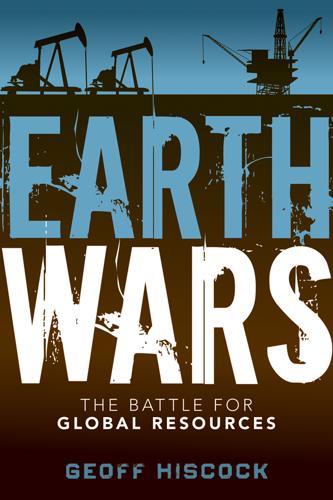
Earth Wars: The Battle for Global Resources
by
Geoff Hiscock
Published 23 Apr 2012
Another of Google’s investments is in a 360 km sub-sea transmission line designed to serve offshore wind farms along the U.S. east coast. All told, in the last few years, the U.S. Department of Energy has issued loans, guarantees, or conditional commitments totaling $38 billion to clean energy projects. But it has not been plain sailing: high-profile Solyndra, recipient of a $535 million government loan guarantee in 2009 on a promise that it would create 4,000 “clean energy” jobs, was one of three U.S. solar companies to file for bankruptcy in 2011 as Chinese competition squeezed PV panel prices. Half a world away in Europe, funding support for renewable energy has been in place for years through rebates and generous feed-in tariffs, but may now be coming to an end as economic conditions prompt legislators to review the situation.
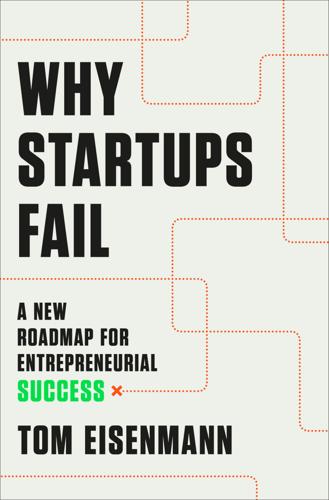
Why Startups Fail: A New Roadmap for Entrepreneurial Success
by
Tom Eisenmann
Published 29 Mar 2021
Some entrepreneurs believe that more innovation is always better, but as we’ll see, that mindset can get them in trouble. Entrepreneurial innovation comes in three flavors: 1) new business models, as with Rent the Runway offering apparel for rent rather than sale; 2) new technologies, as with Solyndra, a failed maker of cylindrical solar panels built with a proprietary thin-film material; and 3) combining existing technologies in new ways, as with Quincy Apparel using a measurement system akin to that used for men’s suiting to offer better-fitting clothing for women. Some forms of innovation require changes in customer behavior.
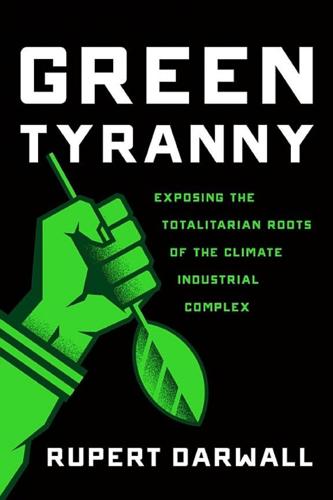
Green Tyranny: Exposing the Totalitarian Roots of the Climate Industrial Complex
by
Rupert Darwall
Published 2 Oct 2017
Trail and Edgar Espinoza, “Avian Mortality at Solar Energy Facilities in Southern California: A Preliminary Analysis,” April 2014, pp. 1–2, accessed via http://alternativeenergy.procon.org/sourcefiles/avian-mortality-solar-energy-ivanpah-apr-2014.pdf (accessed January 15, 2016). 37Ellen Knickmeyer and John Locher, “‘Alarming” Rate of Bird Deaths as New Solar Plants Scorch Animals in Mid-Air,” October 18, 2014, http://www.huffingtonpost.com/2014/08/18/bird-deaths-solar_n_5686700.html (accessed January 15, 2016). 38American Bird Conservancy, “Bald and Golden Eagles Victorious: Court Invalidates 30-Year ‘Eagle Take’ Rule,” August 12, 2015, http://abcbirds.org/article/bald-golden-eagles-victorious-court-invalidates-30-year-eagle-take-rule/ (accessed January 15, 2016). 39American Bird Conservancy, http://abcbirds.org/program/wind-energy/ (accessed January 15, 2016). 40National Audubon Society, https://www.audubon.org/content/audubons-position-wind-power (accessed January 15, 2016). 19. Capitalism’s Fort Sumter 1Adam Smith, An Inquiry into the Nature and Causes of the Wealth of Nations (Chicago, 1976), p. 363. 2Mark Mills interview with author, June 27, 2015. 3Mark Mills, “Will the Paris Climate Summit Lead to More Money for Scientists or Solyndras?” Forbes.com, December 2, 2015, http://www.forbes.com/sites/markpmills/2015/12/02/progress-in-paris-at-the-cop21-more-money-for-scientists-or-corporatists/print/ (accessed January 15, 2016). 4Steven Malanga, “The Green behind California’s Greens,” City Journal, Spring 2015. 5Adam Smith, An Inquiry into the Nature and Causes of the Wealth of Nations (Chicago, 1976), p. 477. 6Ibid., p. 478. 7Joel Kotkin, “Are We Heading for an Economic Civil War?”
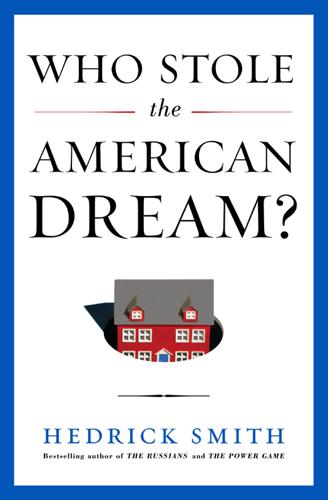
Who Stole the American Dream?
by
Hedrick Smith
Published 10 Sep 2012
It was modeled on the Pentagon’s DARPA (Defense Advanced Research Projects Agency), which has spawned thousands of important new technologies with commercial as well as defense applications. Obama put $400 million in his 2009 stimulus package to launch ARPA-E and to fund more than thirty of the most daring new energy projects. But as we saw from the bankruptcy of the solar energy firm Solyndra after it got more than $500 million in government loan guarantees, the government has to be much smarter in picking the companies it funds and much tougher in overseeing their performance. Step #3: Generate a Manufacturing Renaissance Step #3 is to generate a manufacturing renaissance in America—perhaps the boldest step of all, and one that will require not only a series of public-private partnerships, but a reset in New Economy thinking.